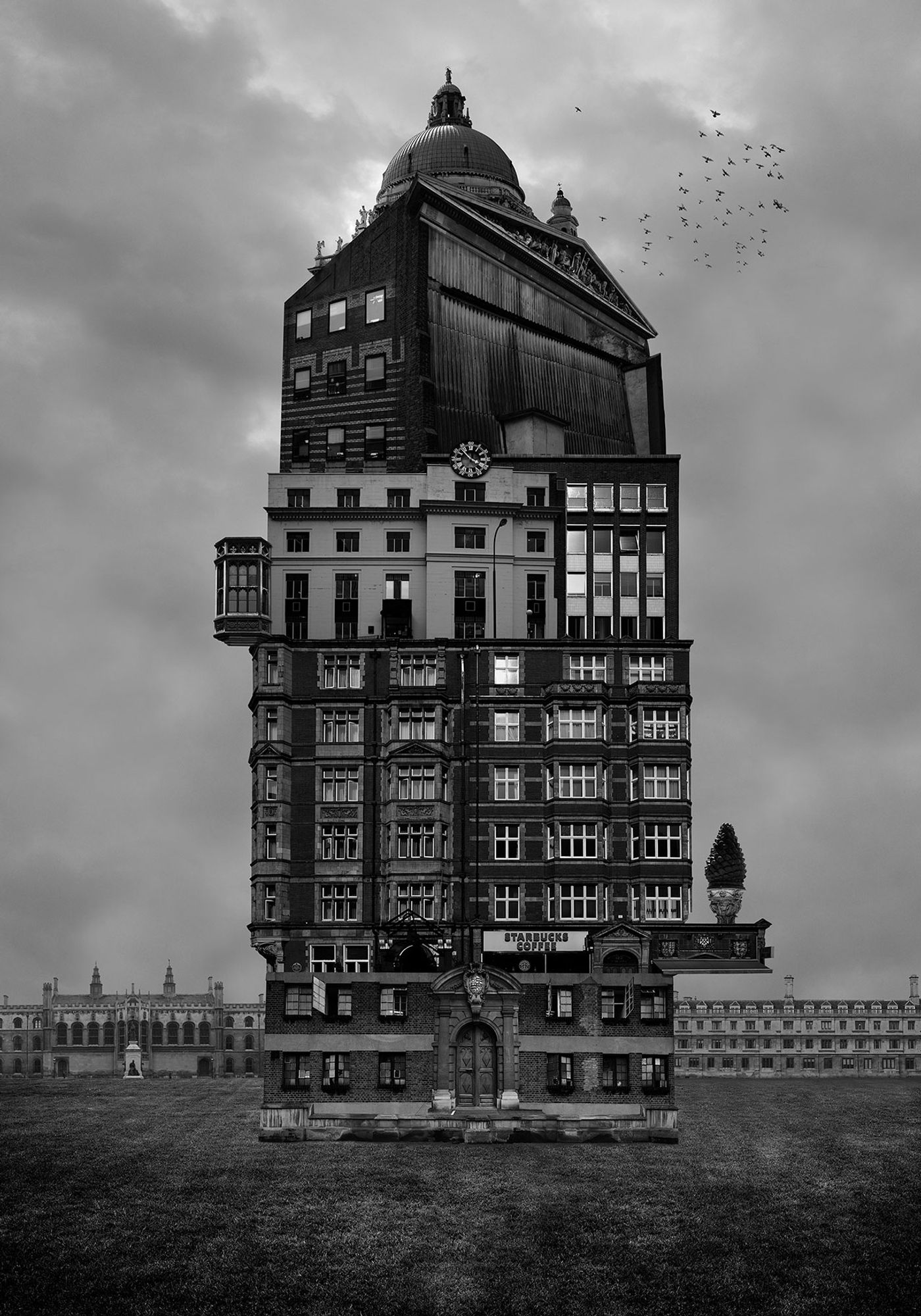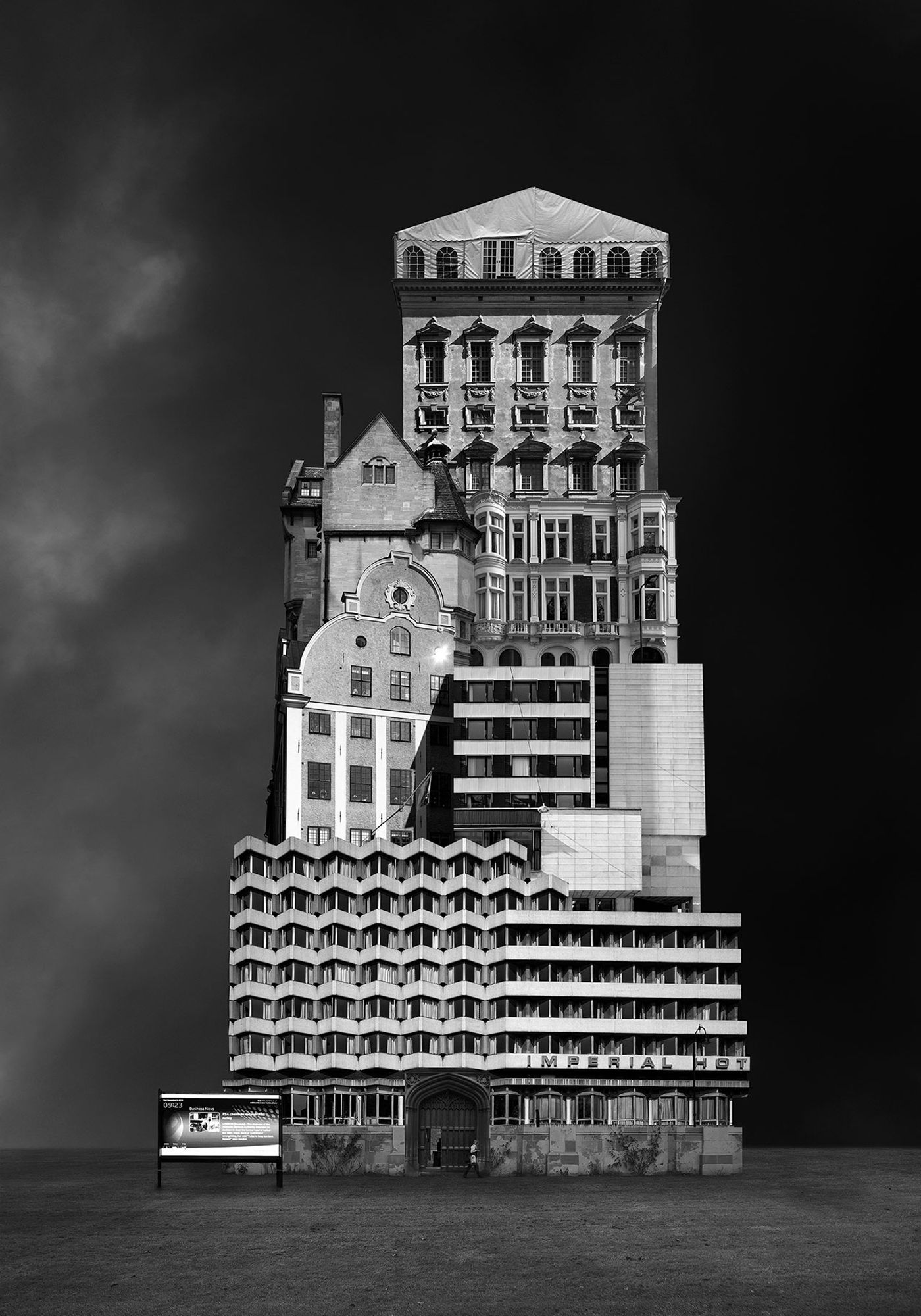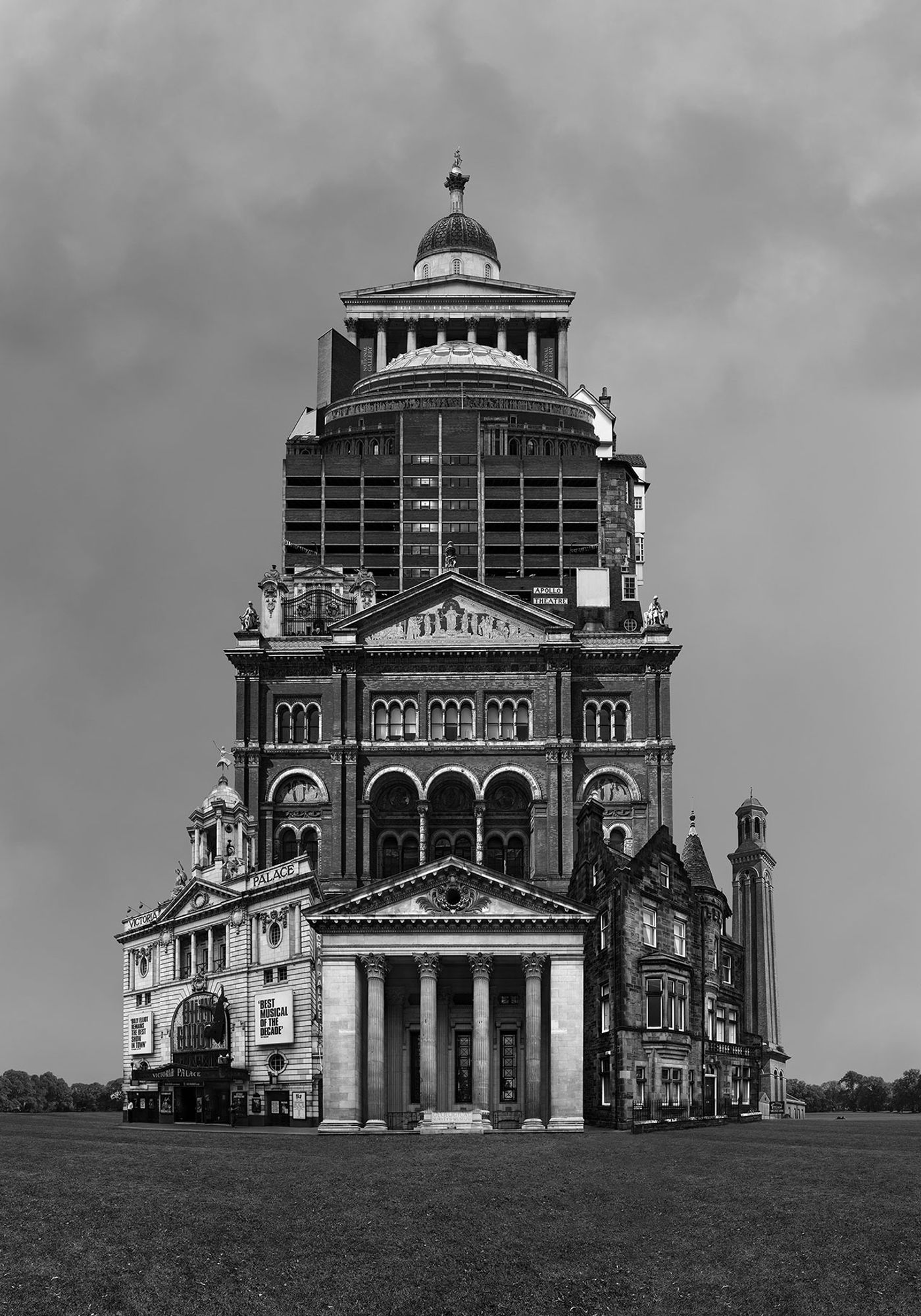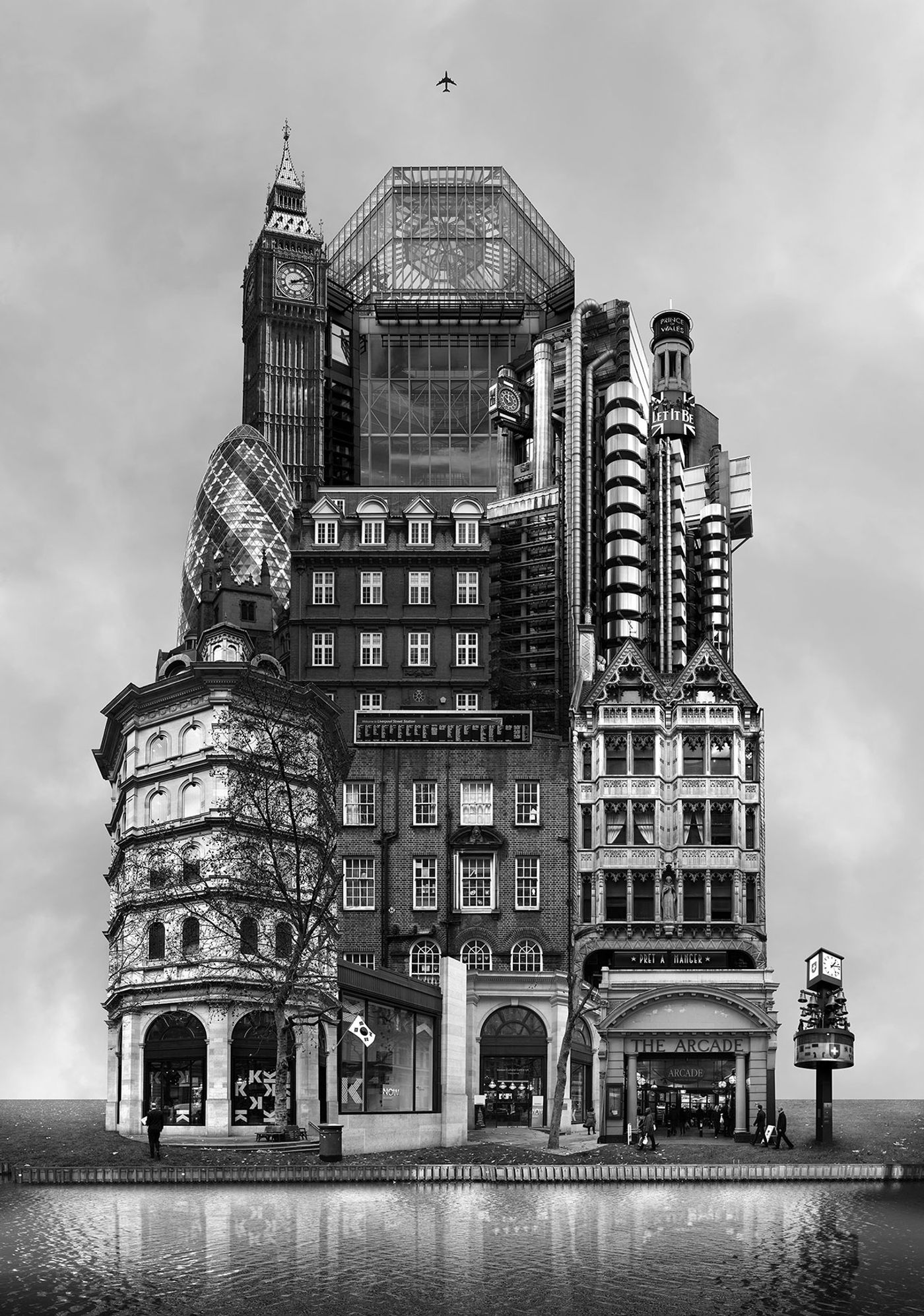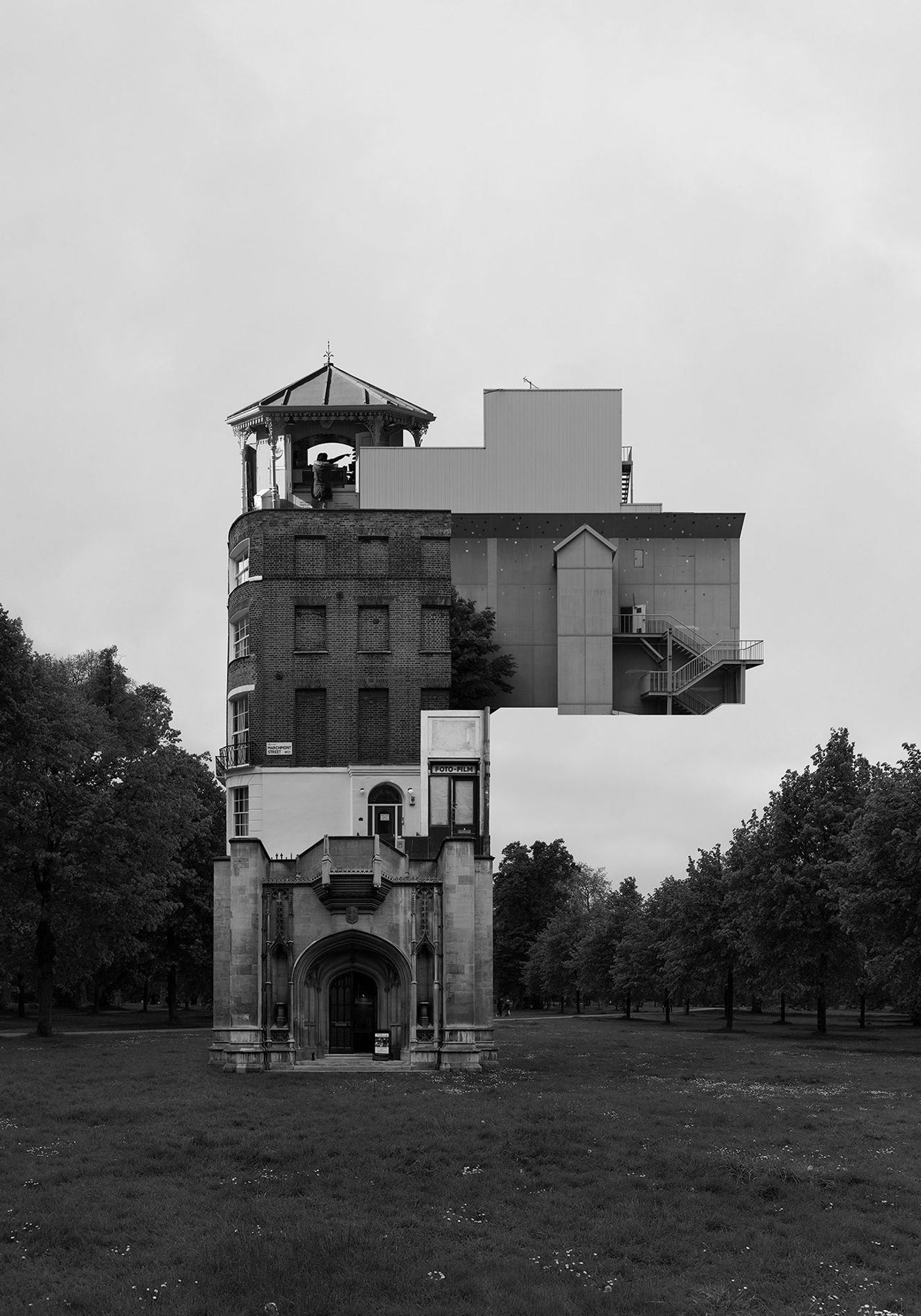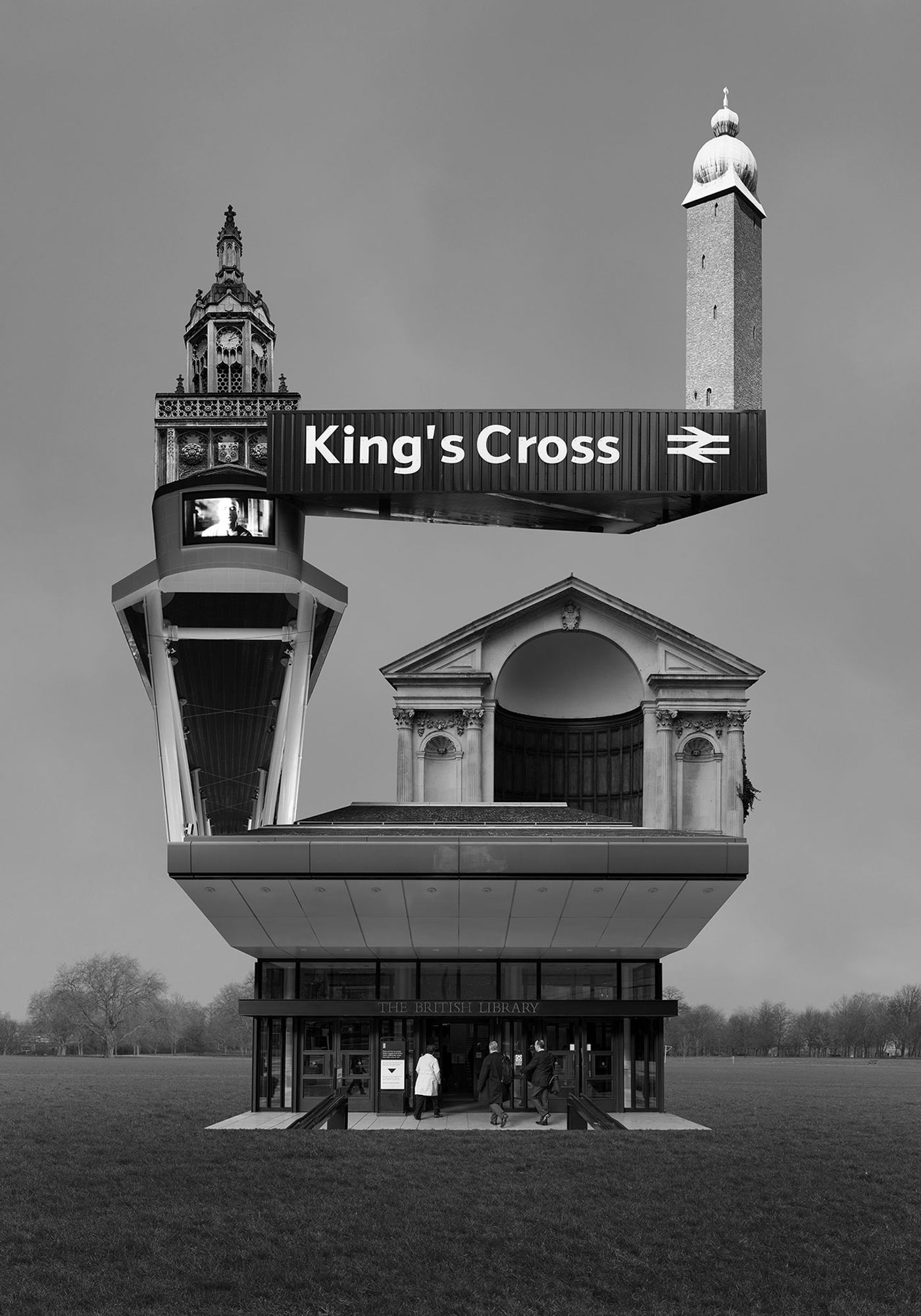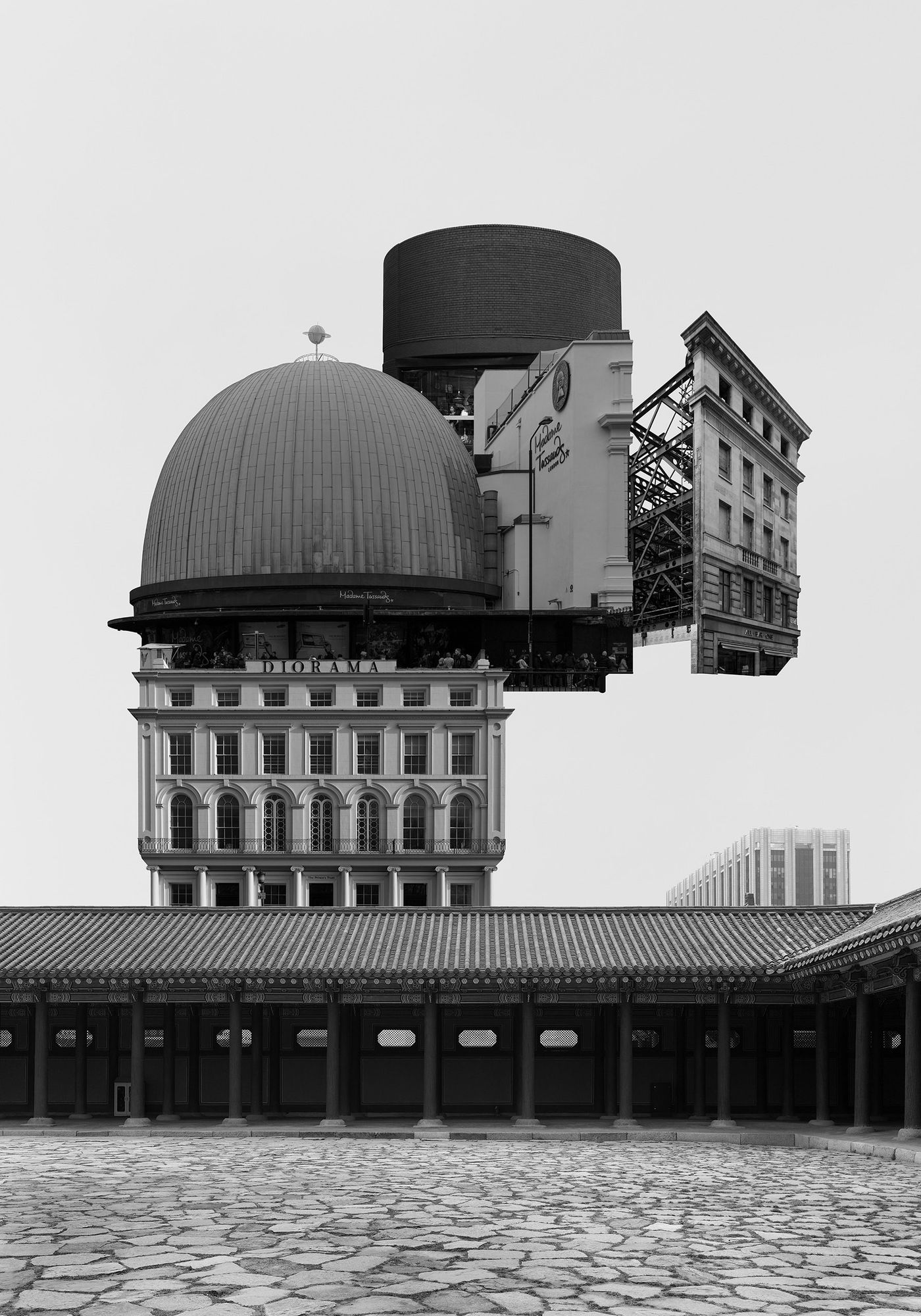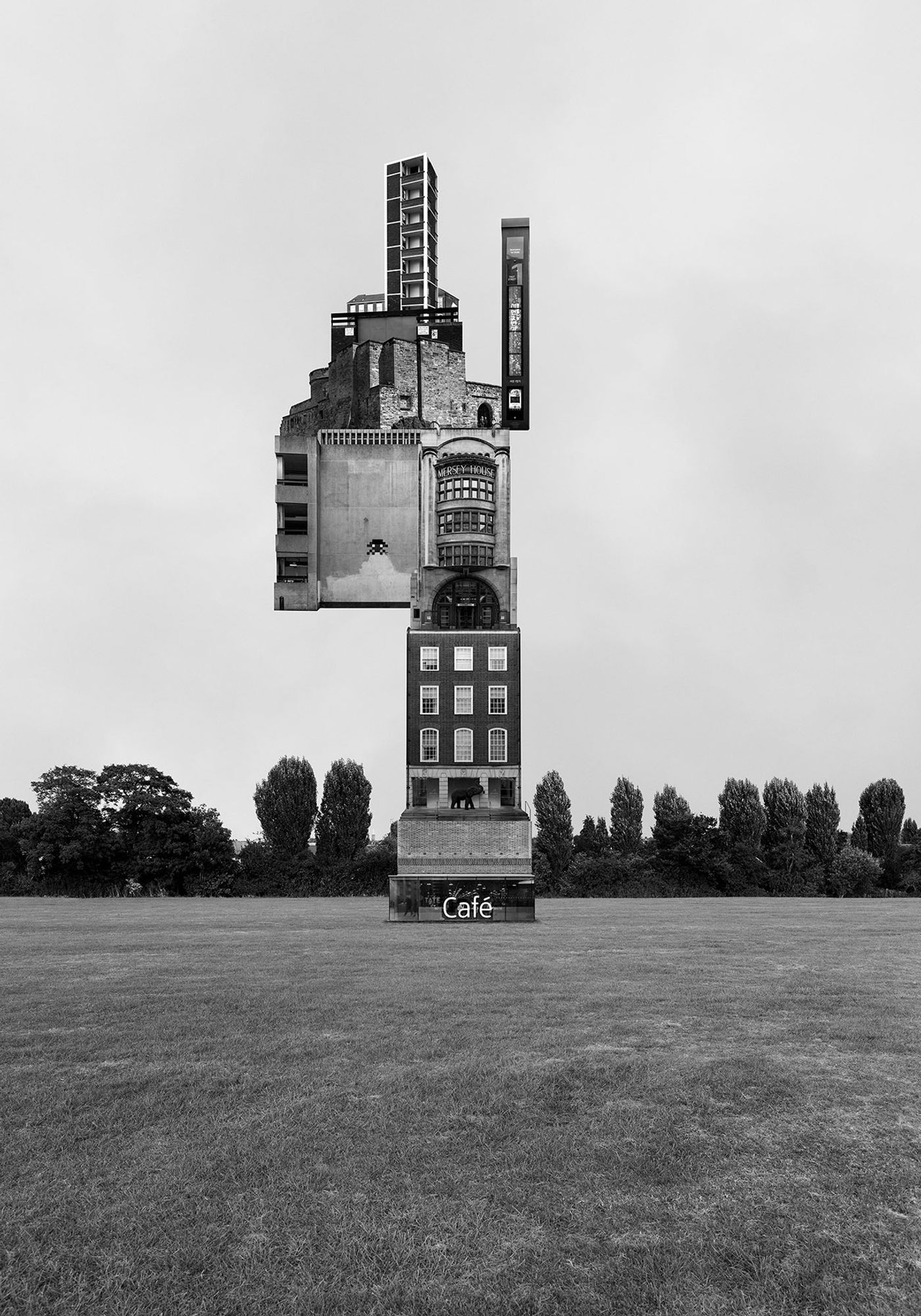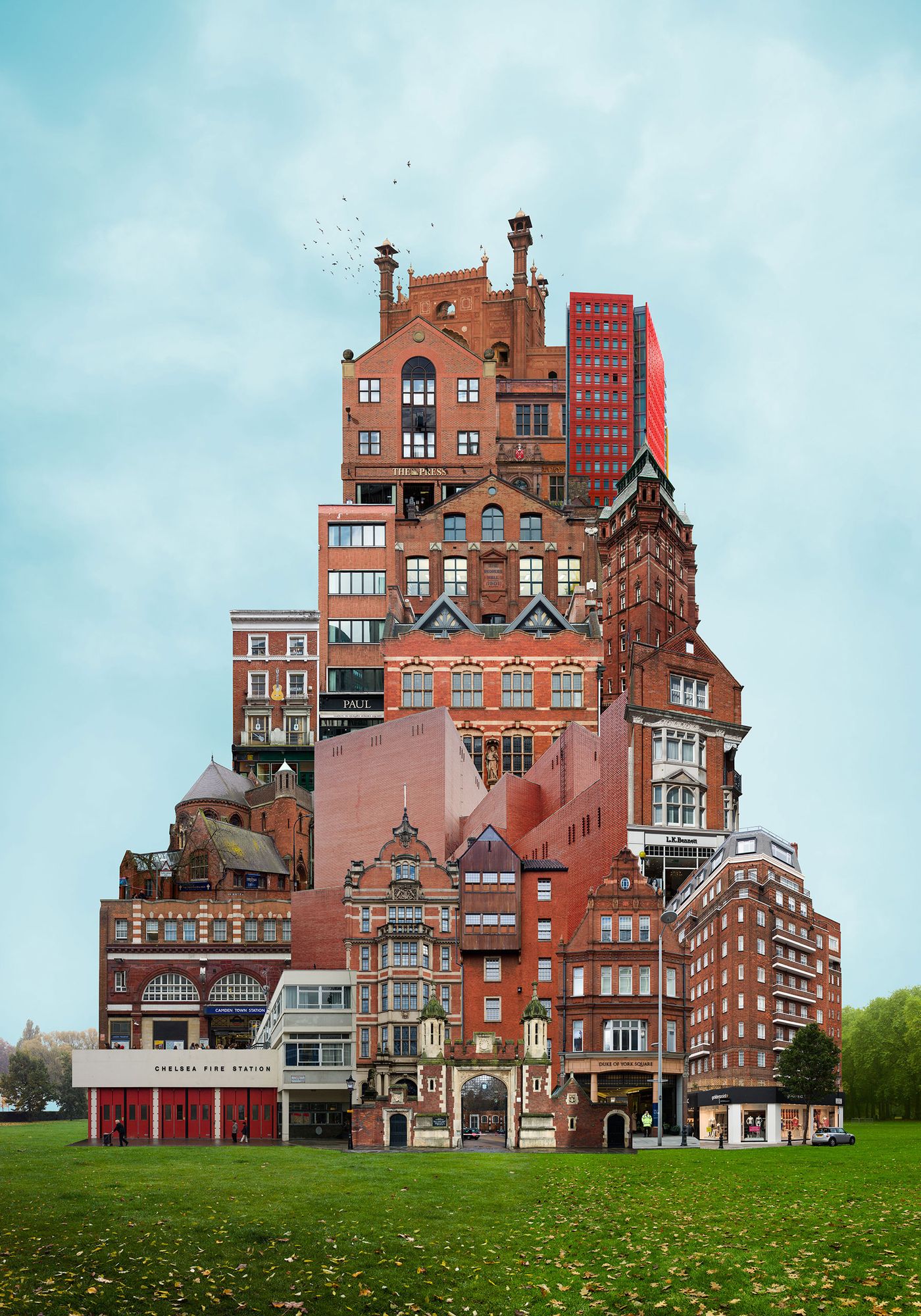
Archisculpture: Surreal Collages of Buildings by Beomsik Won
Words by Eric David
Location
Archisculpture: Surreal Collages of Buildings by Beomsik Won
Words by Eric David
Attempt to label Korean artist Beomsik Won and you’ll be baffled. He photographs but he’s not a photographer, he designs buildings but he’s not an architect, he constructs three-dimensional collages but he’s not a sculptor. As baffling are the images from his Archisculpture Photo Project, which are digitally manipulated photographs of non-existent, fantastical buildings that appear to be real. This surreal sensation stems from two conditions seen in the work: the use of photos of existing buildings as source material—taken from Won’s vast collection which he has single-handedly compiled with his camera walking around London where he studied at the Slade School of Fine Art and on his trips around the world—and their conceptually astute and graphically immaculate execution.
Won’s process is one of deconstruction and reconstruction. Divided into two chapters, Collage and Antigravity—the latter depicting composites of precarious balance and structural incongruities—and placed in isolation on fields or parks with a low-lying horizon, his architectural constructs are monumental edifices that encapsulate the entirety of the city, era or style its components are drawn from. But more than that, they are a visionary take on the way we live now and a testament to the artist’s unbridled imagination. Yatzer talked to the artist about his photo project, his artistic vision and his interest in philosophy.
(Answers have been edited for clarity.)
{Original limited edition prints by Beomsik Won are available online at Rise Art}.
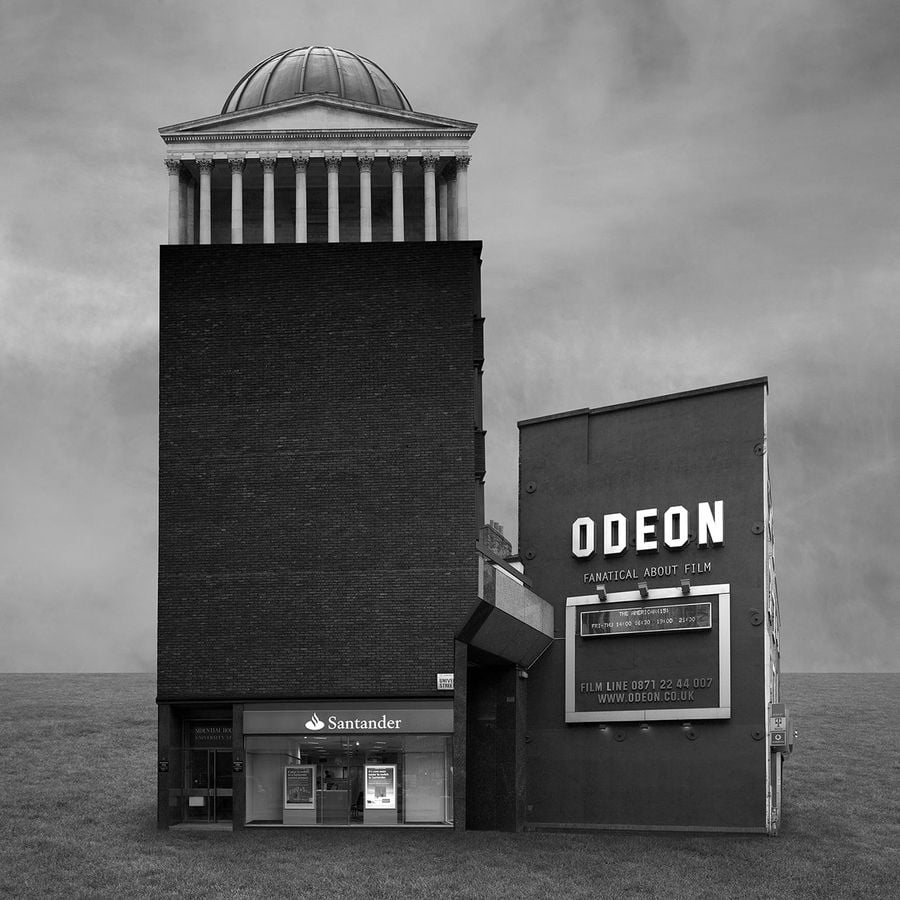
Beomsik Won, Archisculpture 001, 2010. Archival pigment print, 100x100 or 30x30cm.
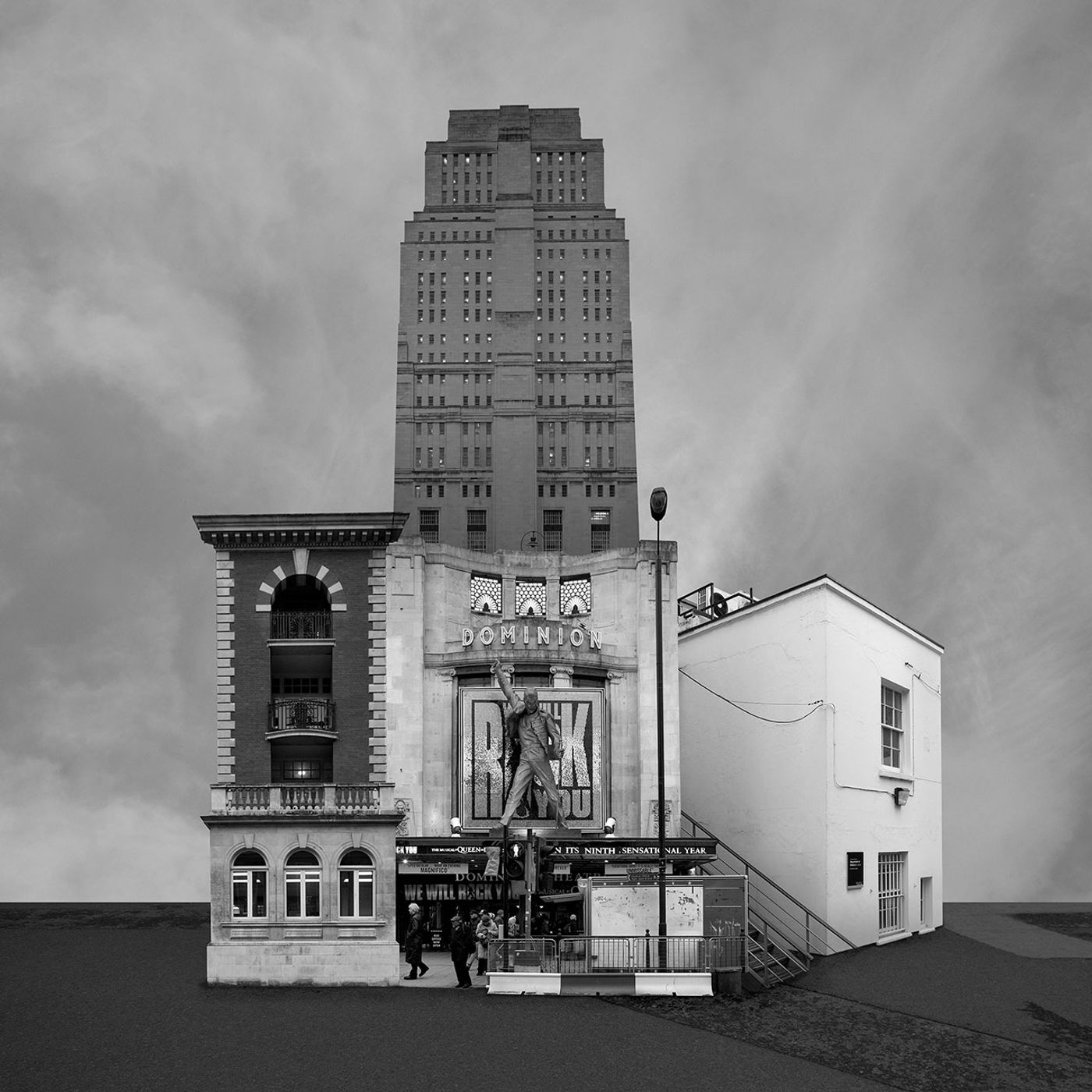
Beomsik Won, Archisculpture 002, 2010. Archival pigment print, 50x50cm.
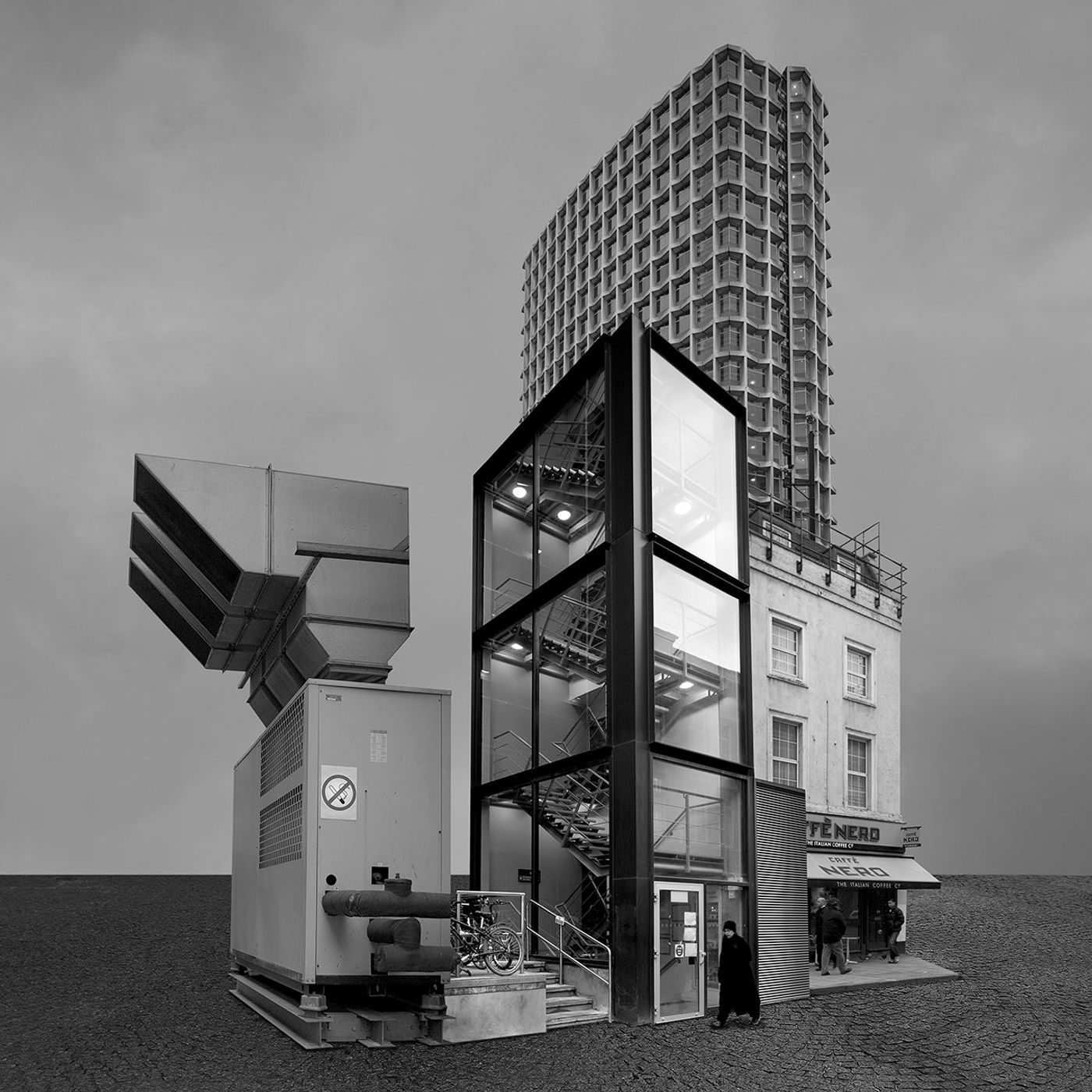
Beomsik Won, Archisculpture 003, 2010. Archival pigment print, 50x50cm.
You have a photography and arts background. Where did your interest in architecture originate from? What inspired you to launch the Archisculpture photo project?
My interest in architecture stems from its gigantic size and pragmatic functions. Whenever I see buildings of grand scale or interesting design I usually take photos, so I've got thousands of them. However, I couldn't use those photos because even though I took them I thought it's not my work but the architects'. Thus I decided to use them as material for my artworks, like marble or bronze.
What is your process in creating a collage? Do you use only photographs you have taken yourself? Are your criteria for piecing together each collage aesthetic, programmatic or conceptual?
First of all, I select a topic for a new image and then draw it roughly with a pencil. If it is good enough, I search my digital database to find photos which are suitable for the new subject. If I can't find any, then I go out to find buildings that suit my topic and take pictures of them. After collecting the right photographs, I start to collage them according to my initial drawing using graphic design software.
There are no fixed criteria; they can be aesthetic, programmatic or conceptual. Sometimes there is no topic at all.
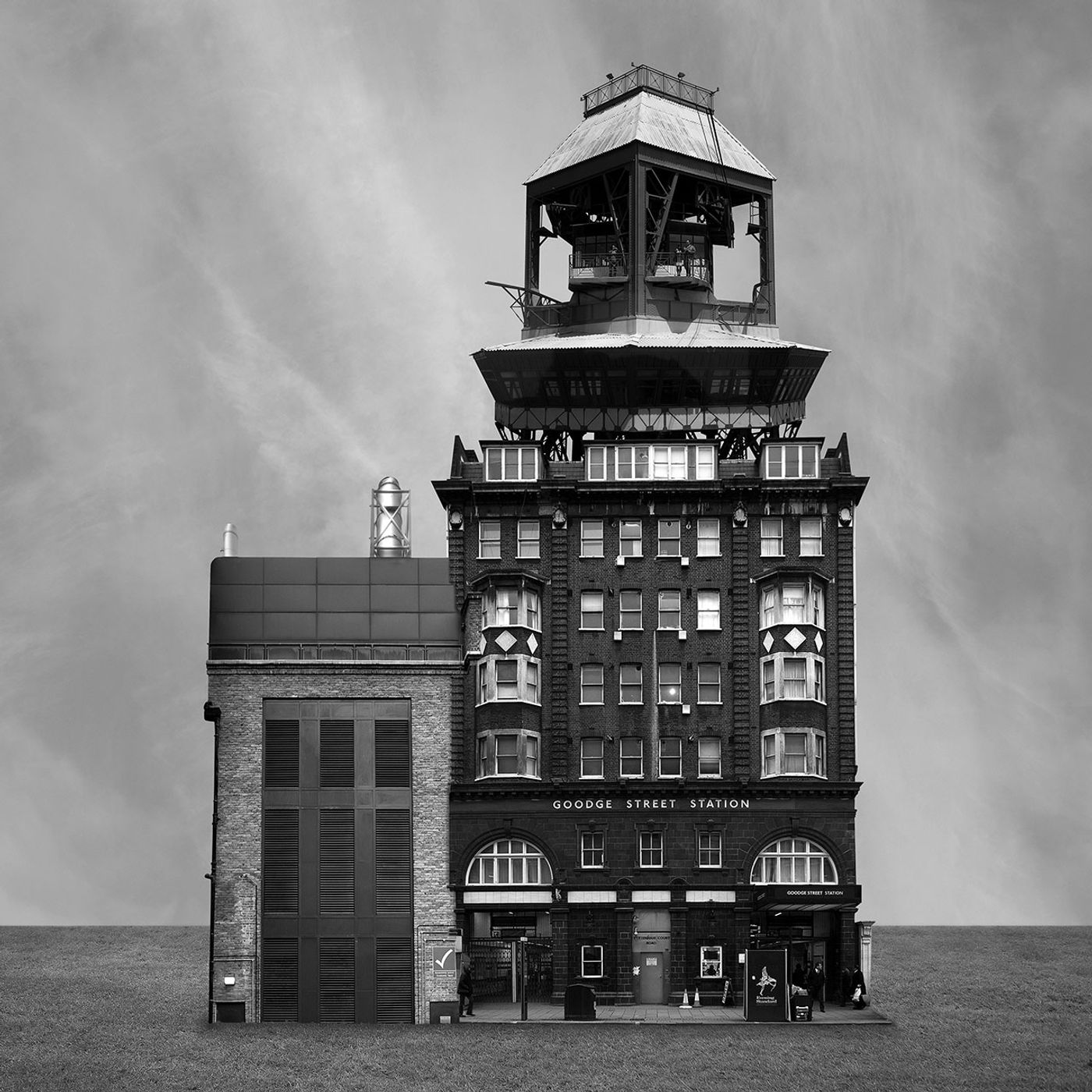
Beomsik Won, Archisculpture 004, 2011. Archival pigment print, 50x50cm.
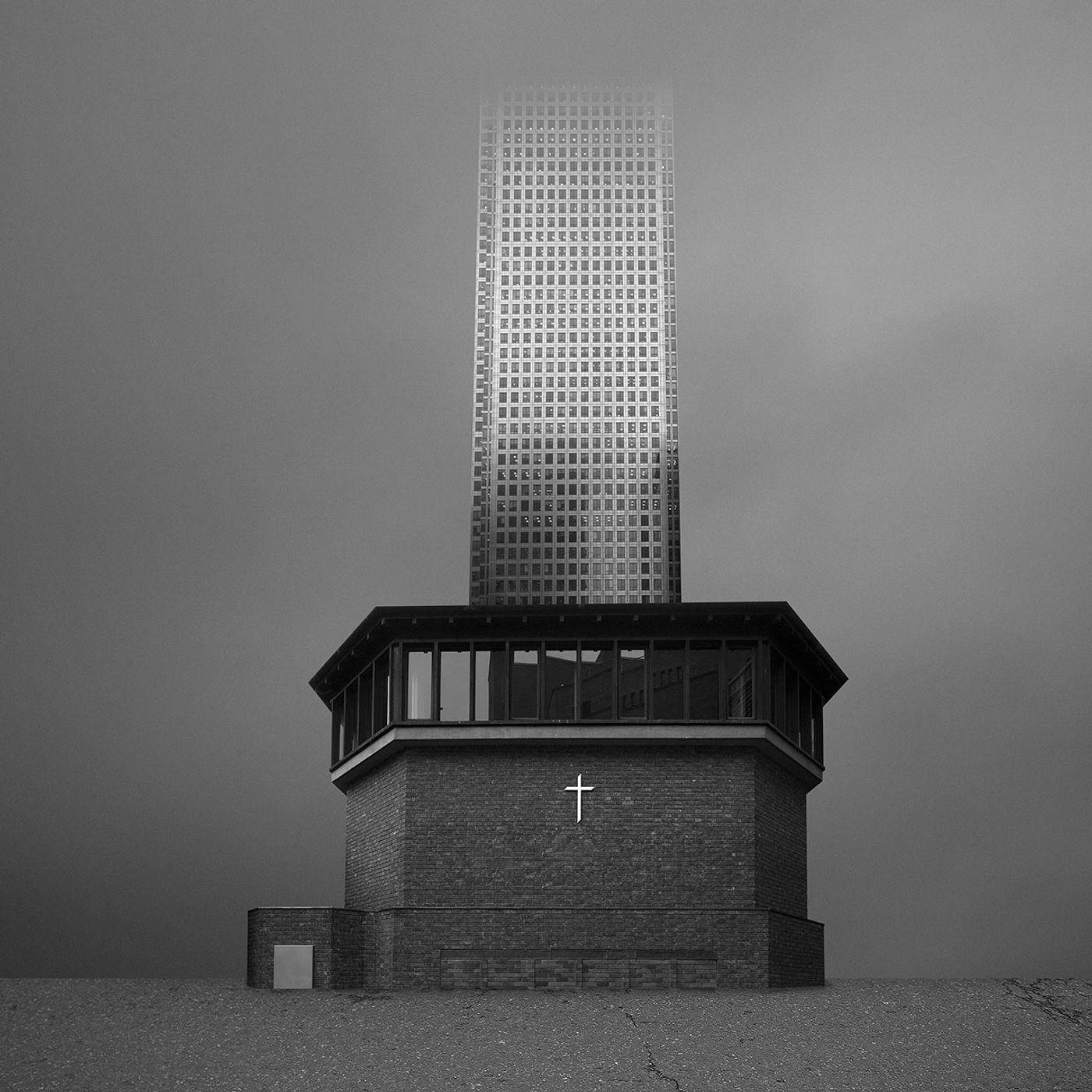
Beomsik Won, Archisculpture 005, 2011. Archival pigment print, 50x50cm.
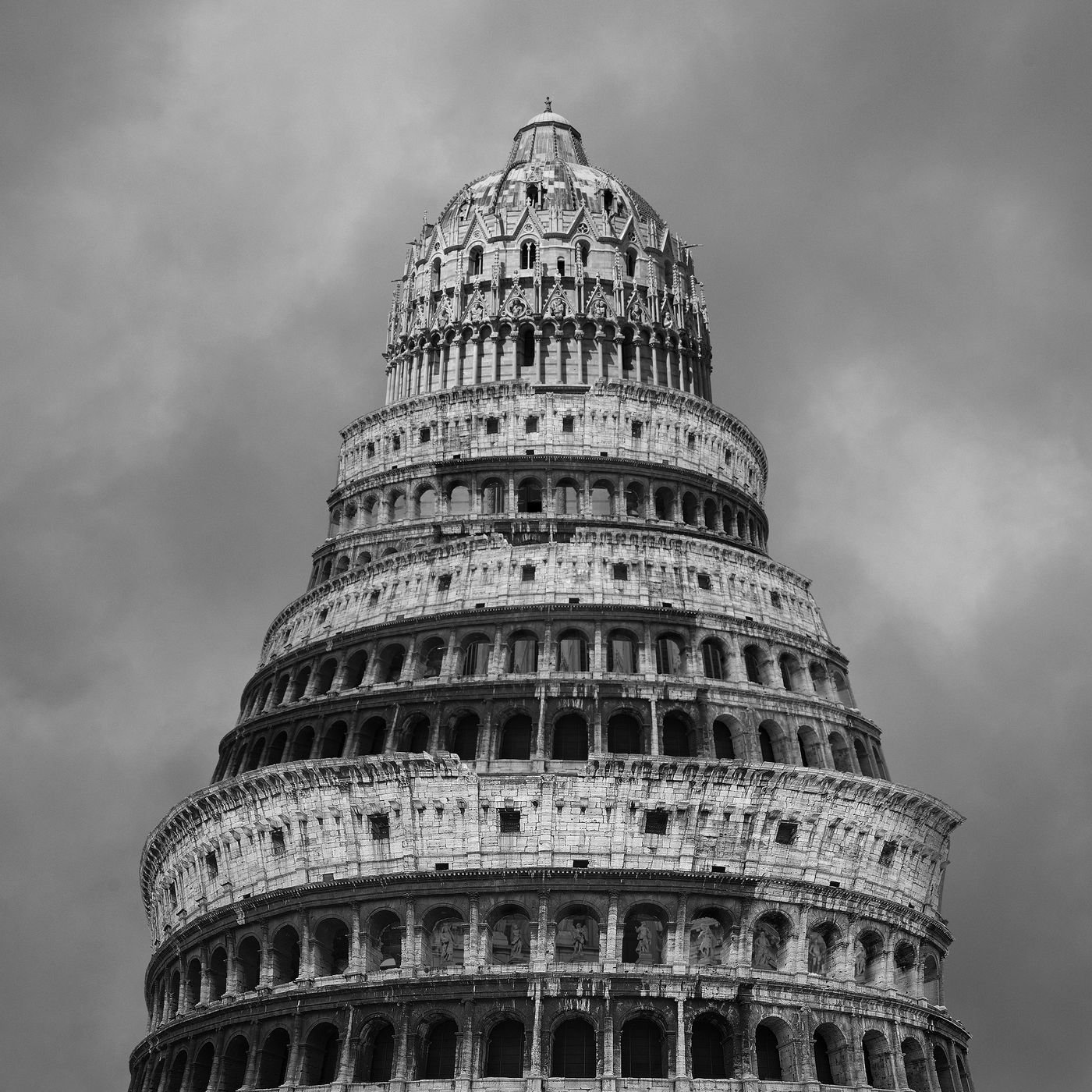
Beomsik Won, Archisculpture 006, 2011. Archival pigment print, 50x50cm.
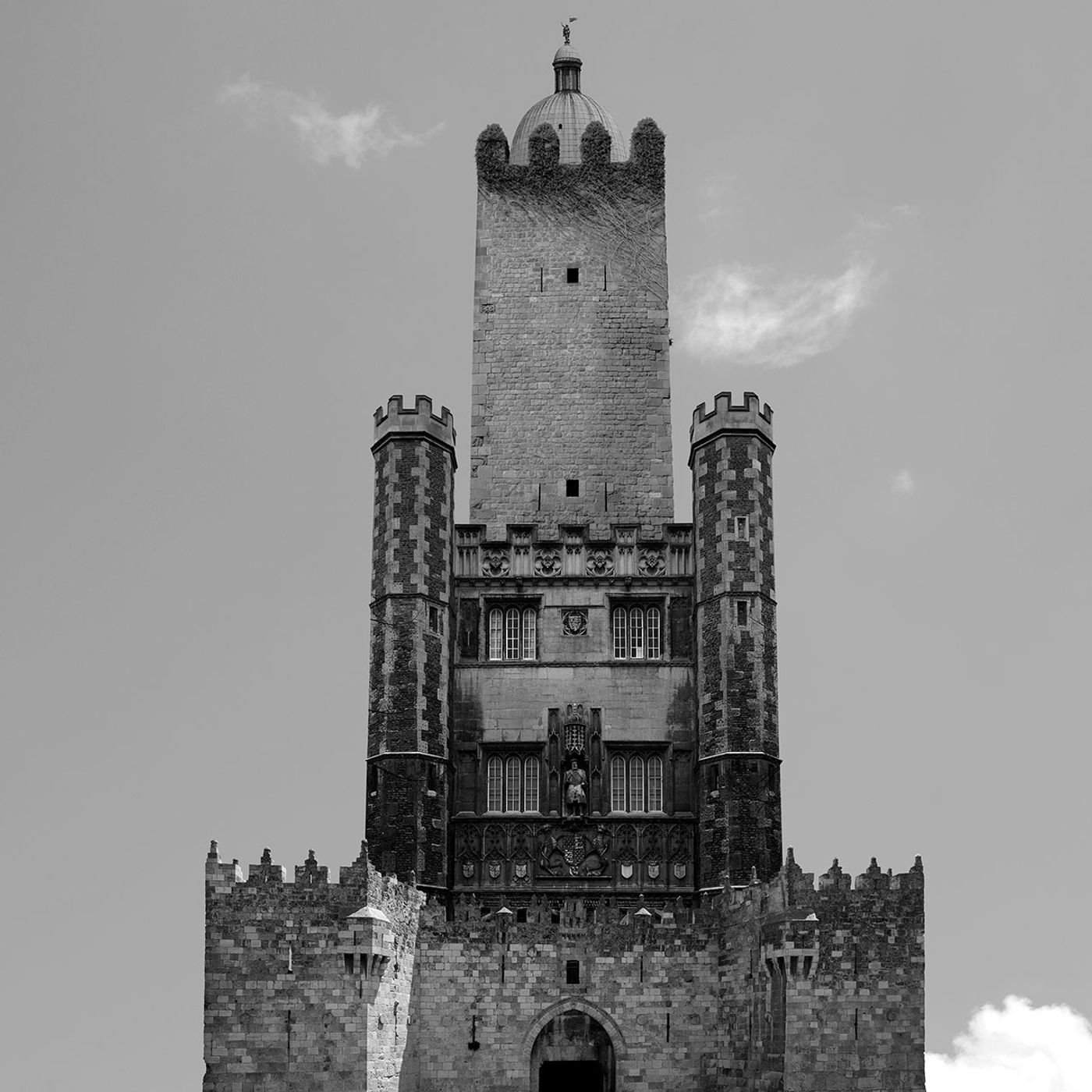
Beomsik Won, Archisculpture 007, 2011. Archival pigment print, 50x50cm.
The Archisculpture images started as black and white prints but has progressed to also include collages in color. What is the significance of each approach? How do they differ in the impact they have on the viewer?
At first, I only made images in b&w, but I realised that the real world is not b&w but coloured. So since then I have been making two version at the same time. I'm not sure how the viewer thinks about this, but for me the b&w version is more surrealistic than colour one.
Referencing the Russian film director Sergei Mikhailovich Eisenstein, you have talked about how “the collision of disparate elements creates stories that before remained beneath the surface”. What kind of stories emerge from your architectural amalgams? Are they the stories of the cities, eras or architectural styles whose fragments the images are combined from?
All the themes you mentioned lie beneath the surface of my Archisculpture series. In addition, some works hide the contents of philosophy books or the history of the city.
In creating extraordinary structures that defy gravity and invite disbelief, your artwork alludes to an urban utopia, yet at the same time, the Tower-of-Babel-like appearance, the structural precariousness and the menacing, overcast skies evoke a more dystopian sensation. Where in the utopia/dystopia spectrum do your images lie? Are they meant to be a harbinger of the future, a critique of the present, or both?
I have never tried to express a utopia or dystopia through my artworks, nor show our world in the future, but viewers are free to think about my work as they please. What I really struggle for is to document social aspects of the world we live in.
Your work, especially the Antigravity series, rejects the Cartesian language of symmetry and order in favor of Derrida’s concept of deconstruction. What is the appeal of the concept of deconstruction to you? Is it primarily a reaction to the complacency of modernism or the commodification of culture?
I think both are correct. Additionally, I wanted to focus on the sculptural rather than the architectural aspect in the Antigravity series.
There is a tentative truce in your collages between order and disorder, the former expressed though an aesthetic homogeneity and a balance of composition, the latter through the disparity of the constituent elements and the conceptual surrealism, as well as a similar tension between reality and fiction. What does this precarious balance signify?
I think that tension is a very important element for living and even making artworks. Because it makes us think. Even at this moment, I feel some tension writing answers about your questions.

Beomsik Won, Archisculpture 012, 2012. Archival pigment print, 100x53 or 171x91cm.
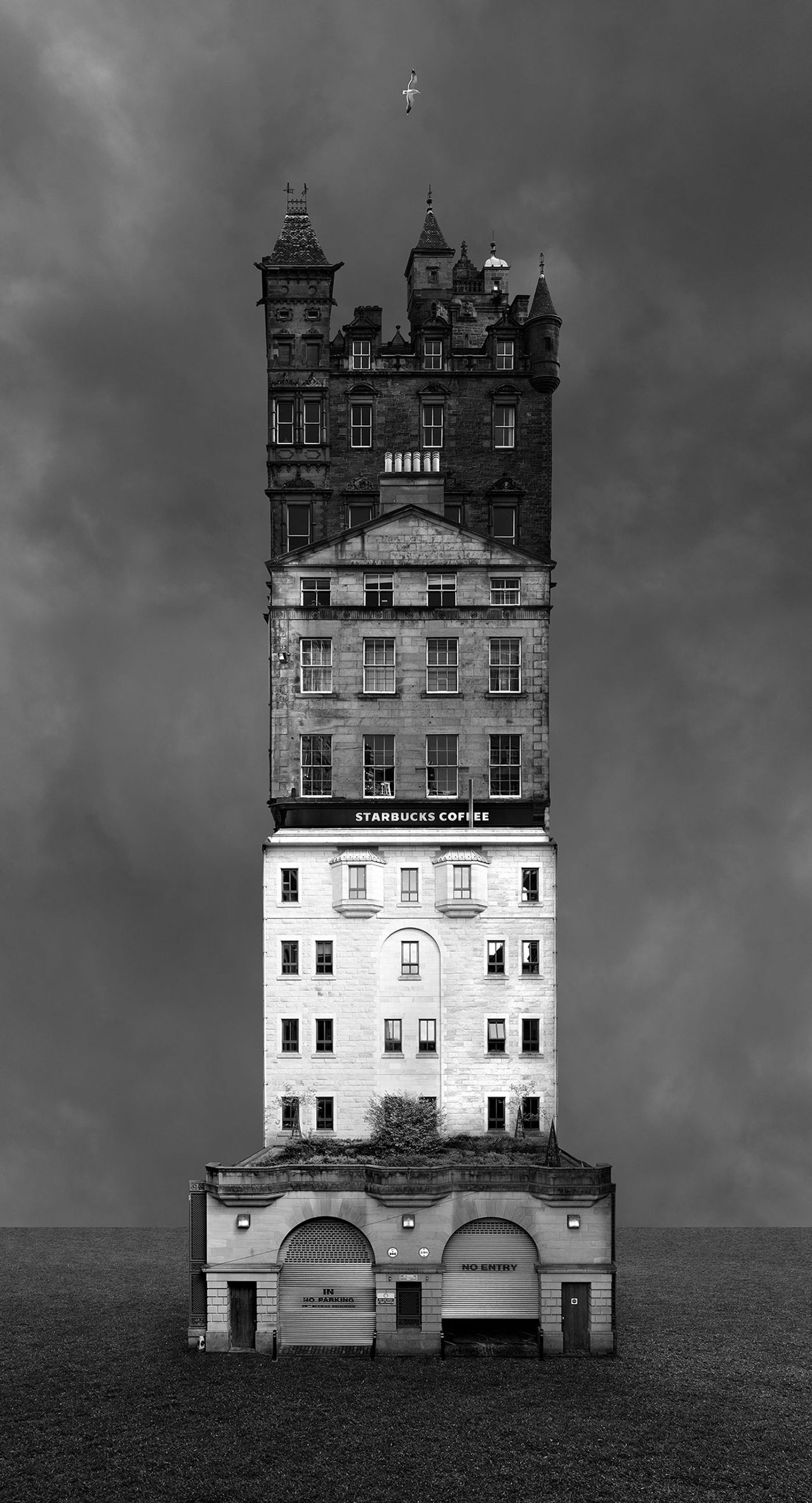
Beomsik Won, Archisculpture 014, 2013. Archival pigment print, 46x25 or 135x73cm.
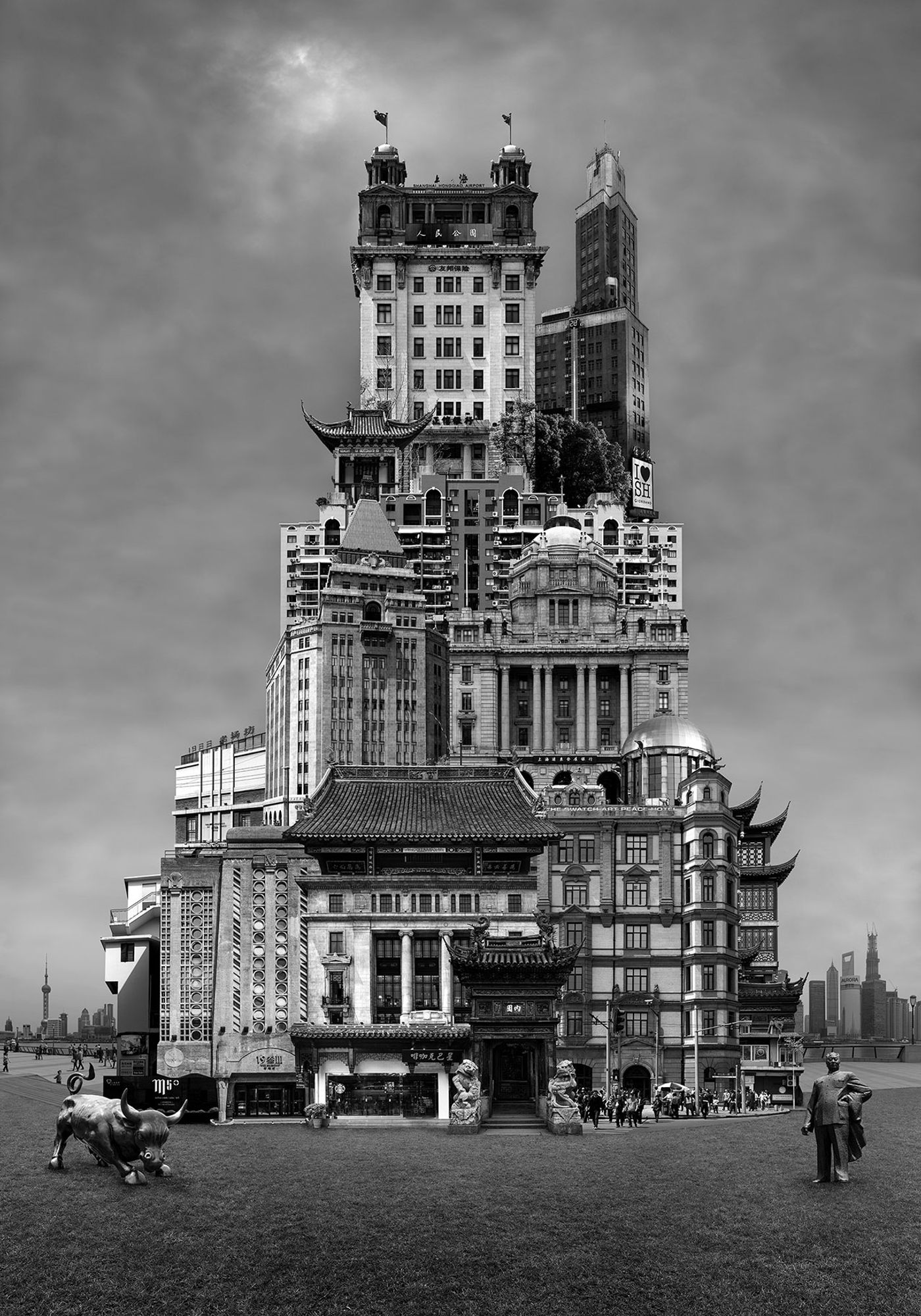
Beomsik Won, Archisculpture 017, 2013. Archival pigment print, 100x70 or 171x120cm.
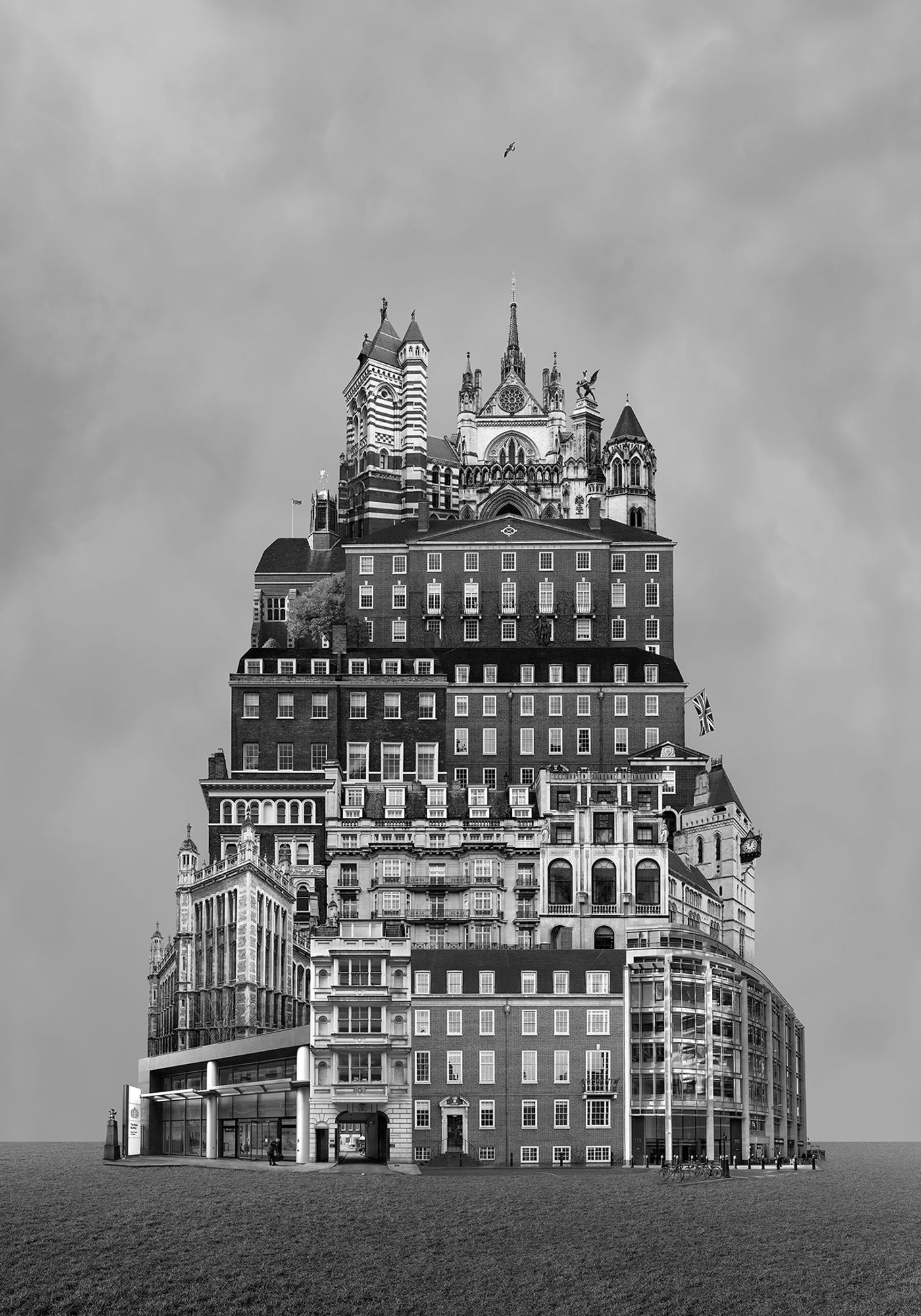
Beomsik Won, Archisculpture 016, 2013. Archival pigment print, 100x70 or 171x120cm.
Conceptually your work consists of merging disparate architectural elements to form something new. Mirroring this process on a higher level, it also involves merging the disciples of architecture, sculpture and photography into an art form that defies categorization. Is this conceptual parallelism part of a postmodern modus operandi? Do you consider yourself a postmodern artist?
I never thought of myself as a postmodern artist because I also make artworks through traditional methods. Actually, the Archisculpture project is only a small part of my oeuvre. However, as an artist who makes works such as Archisculpture, yeah, I probably am a postmodern artist.
In talking about your work you have cited several philosophers such as Jacques Derrida, Roland Barthes, Ludwig Wittgenstein and Walter Benjamin. How has philosophy influenced you as an artist and how important is the theoretical underpinnings to your work?
I think science, philosophy and art are one. They are all connected to one another. If they were just three [separate concepts], there wouldn't be interesting things and indeed we couldn't have achieved this brilliant civilization.
What are you working on right now? Are there any new projects in the pipeline?
These days, I paint in oils. I would say it is a painting version of Archisculpture. I will also introduce a new photo project this year which will show human consciousness. Showing invisible things is my main interest.
And finally, which are your favorite architects and buildings?
Sincerely, I like every architect who makes buildings that make me think and act.
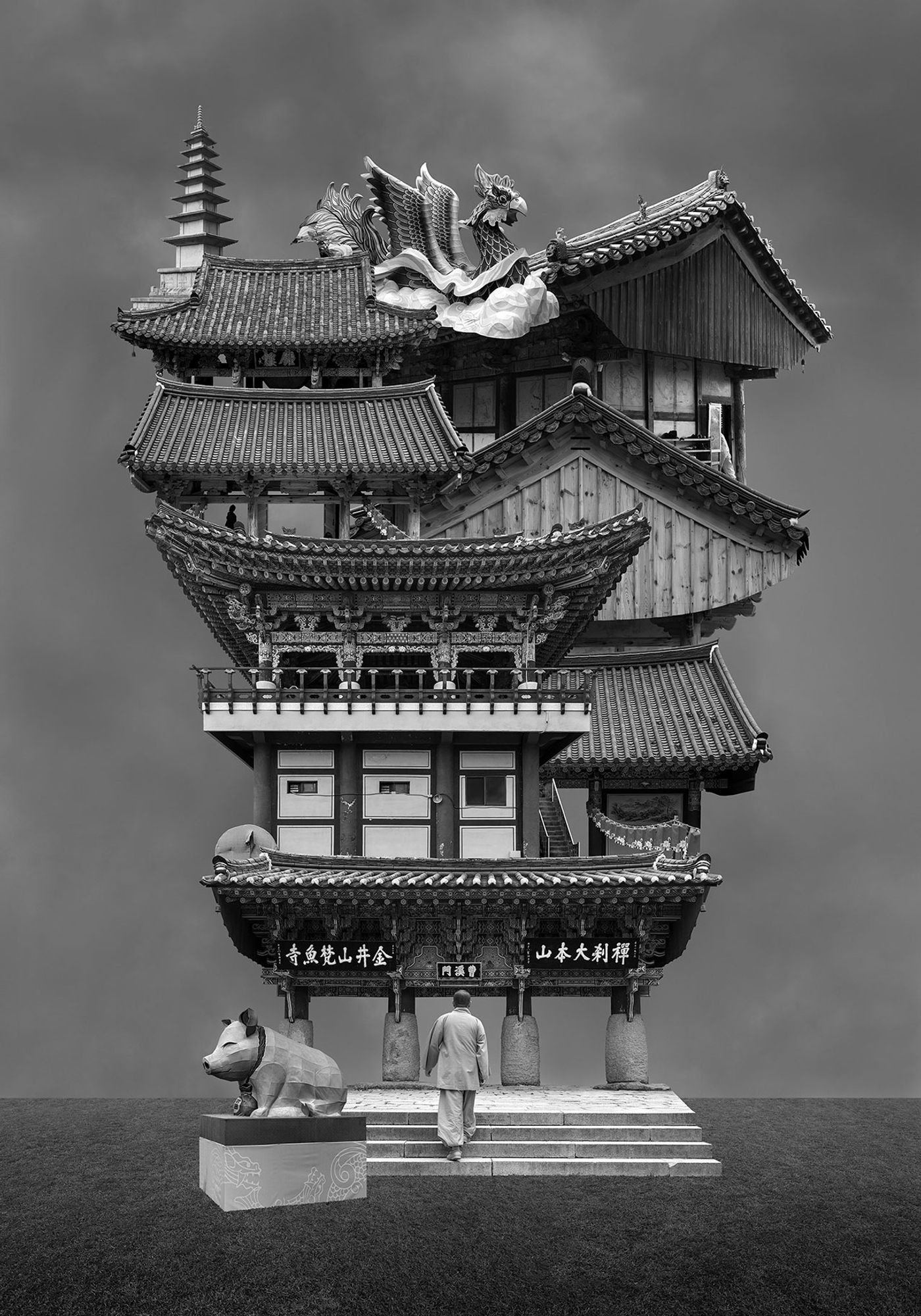
Beomsik Won, Archisculpture 020, 2014. Archival pigment print, 100x70 or 171x120cm.
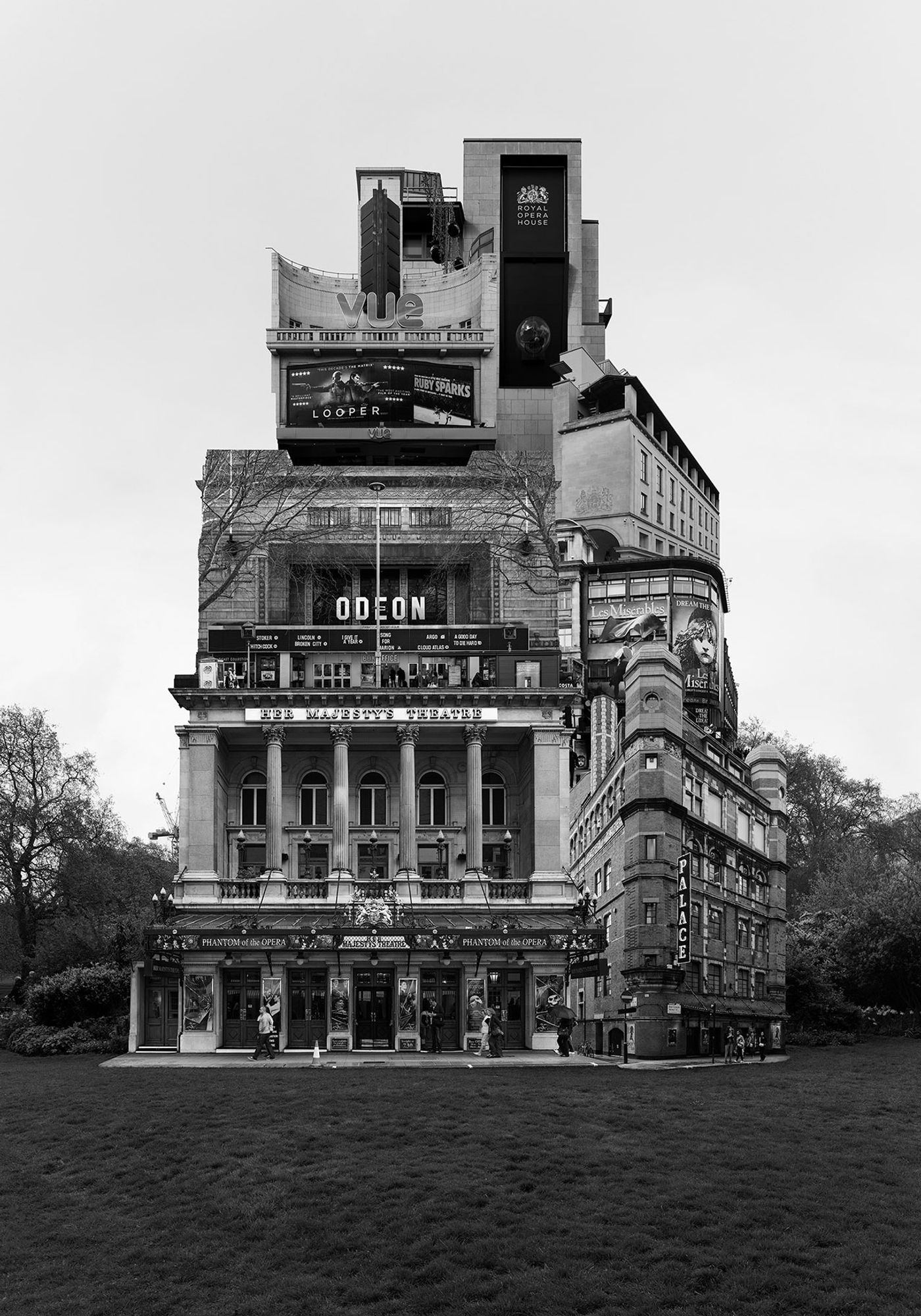
Beomsik Won, Archisculpture 024, 2014. Archival pigment print, 70x49 or 100x70 or 142x100cm.
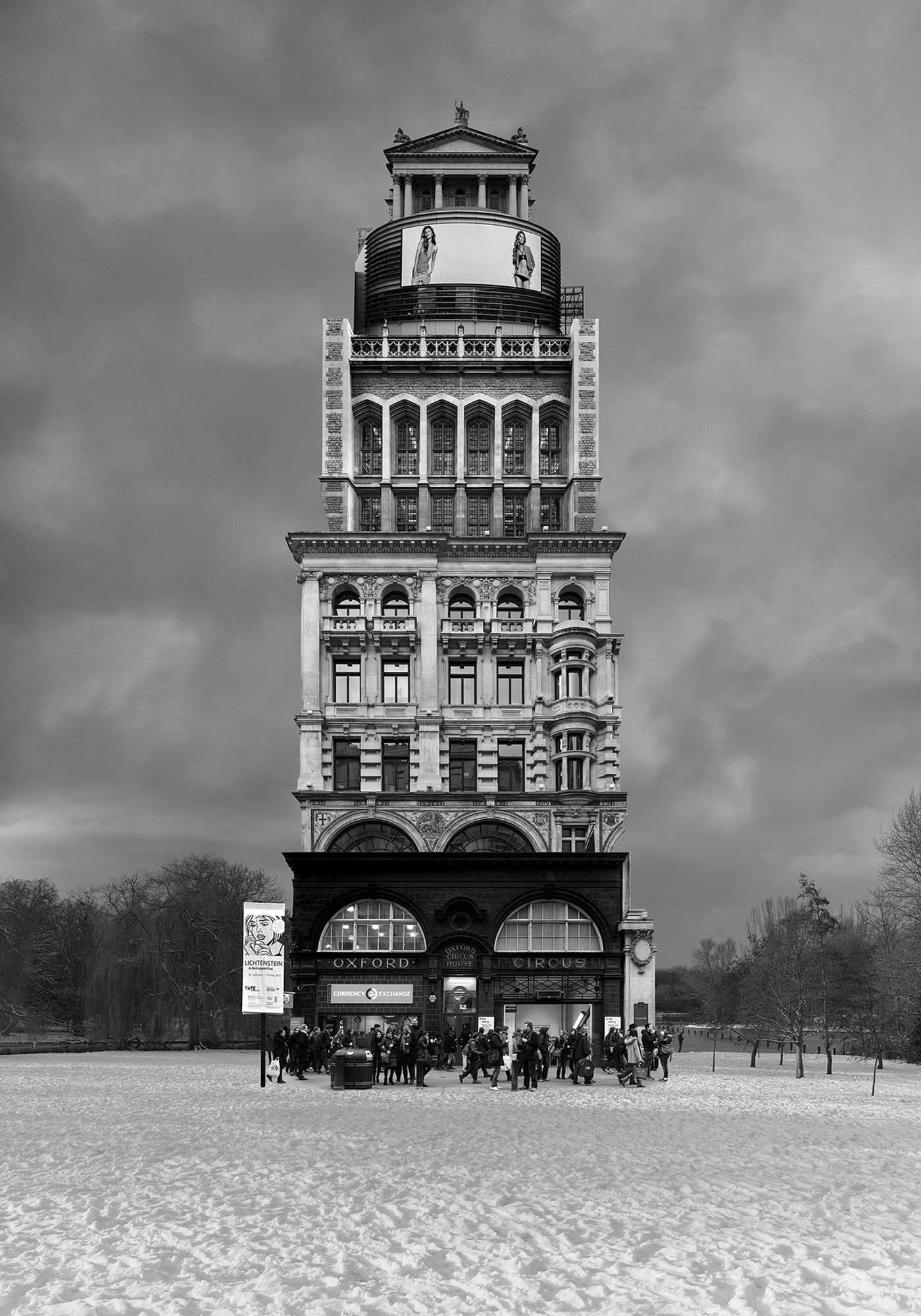
Beomsik Won, Archisculpture 027, 2014. Archival pigment print, 70x49 or 100x70 or 142x100cm.
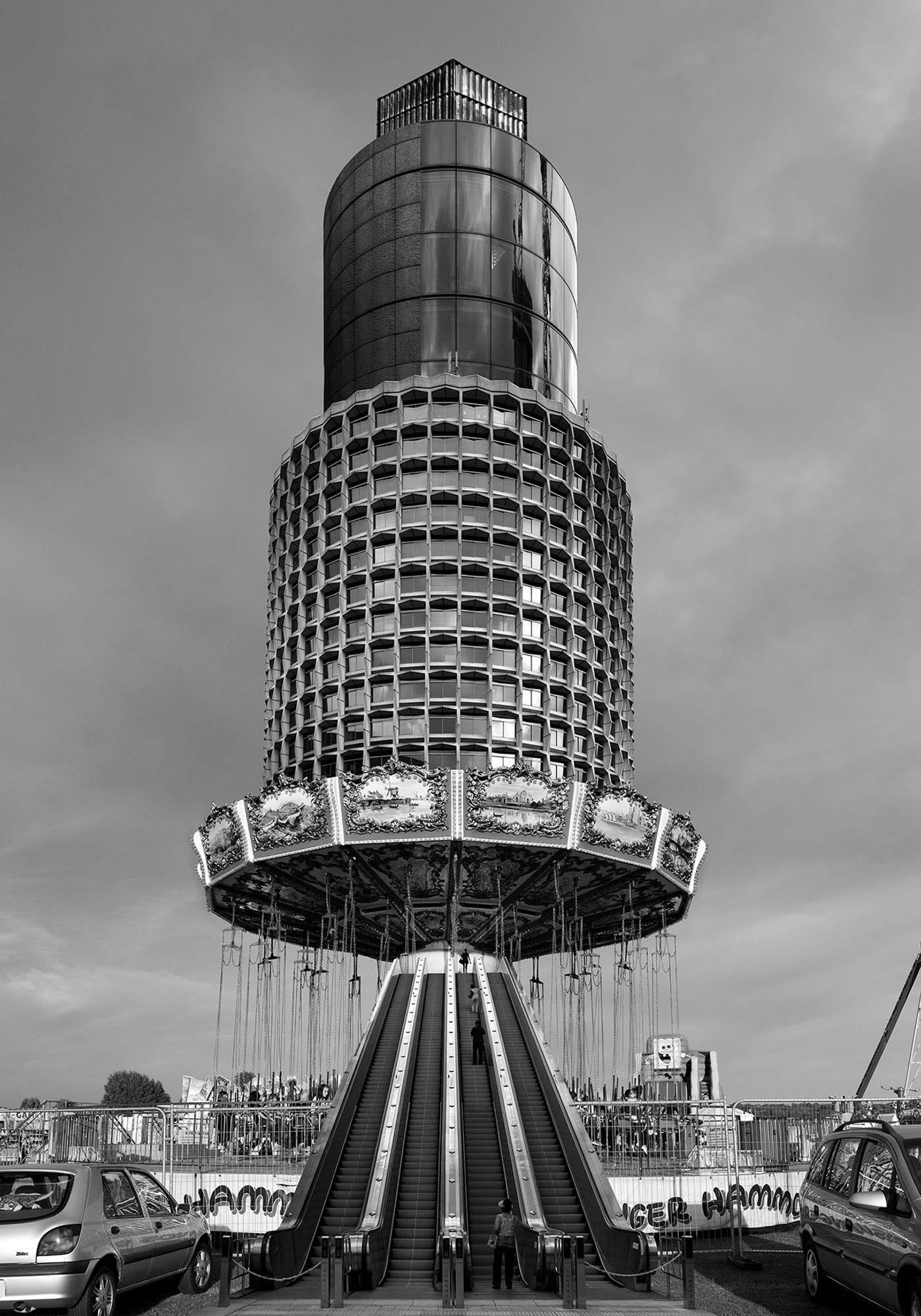
Beomsik Won, Archisculpture 028, 2014. Archival pigment print, 70x49 or 100x70 or 142x100cm.
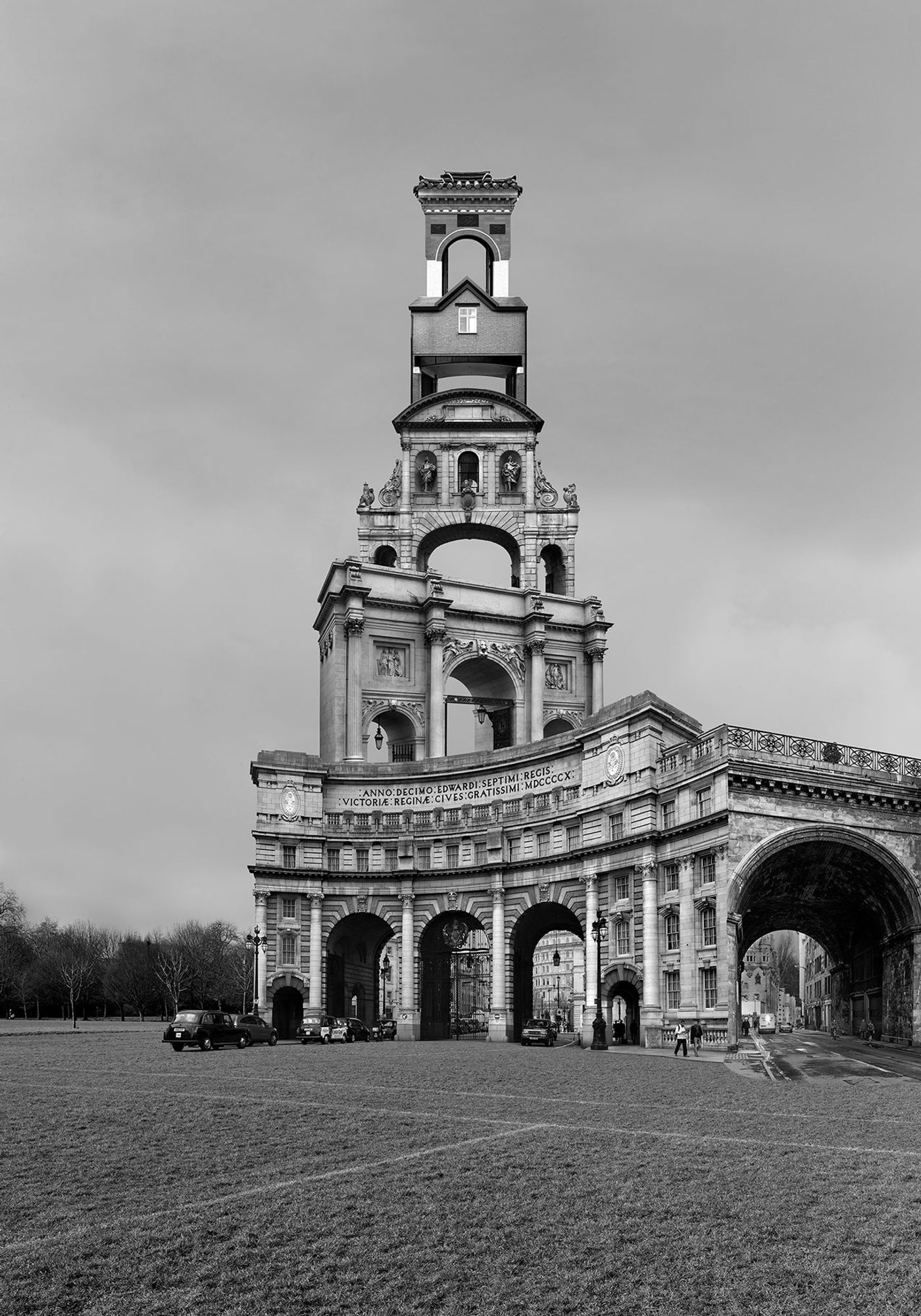
Beomsik Won, Archisculpture 030, 2014. Archival pigment print, 70x49 or 100x70 or 142x100cm.
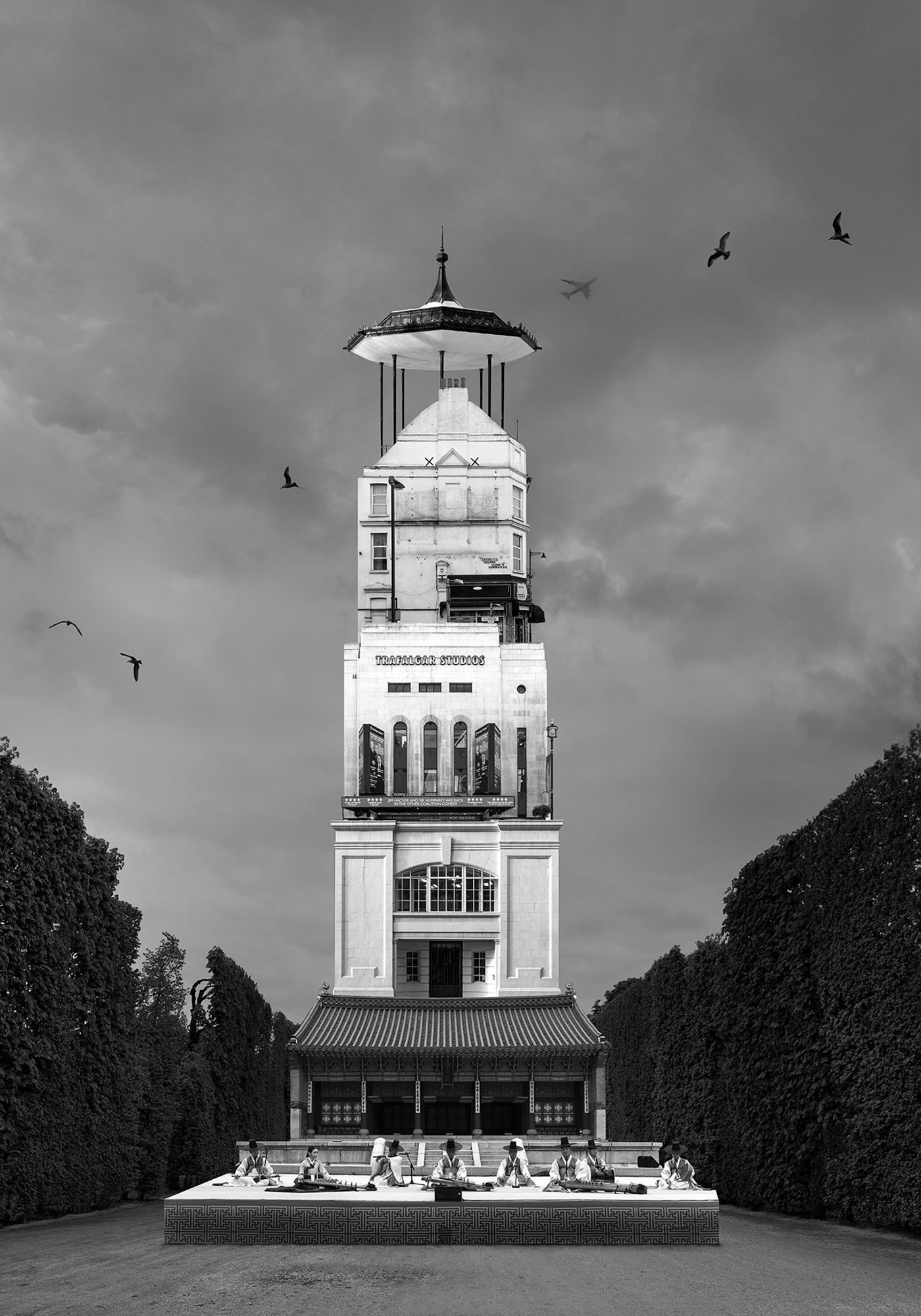
Beomsik Won, Archisculpture 031, 2014. Archival pigment print, 100x70 or 171x120cm.
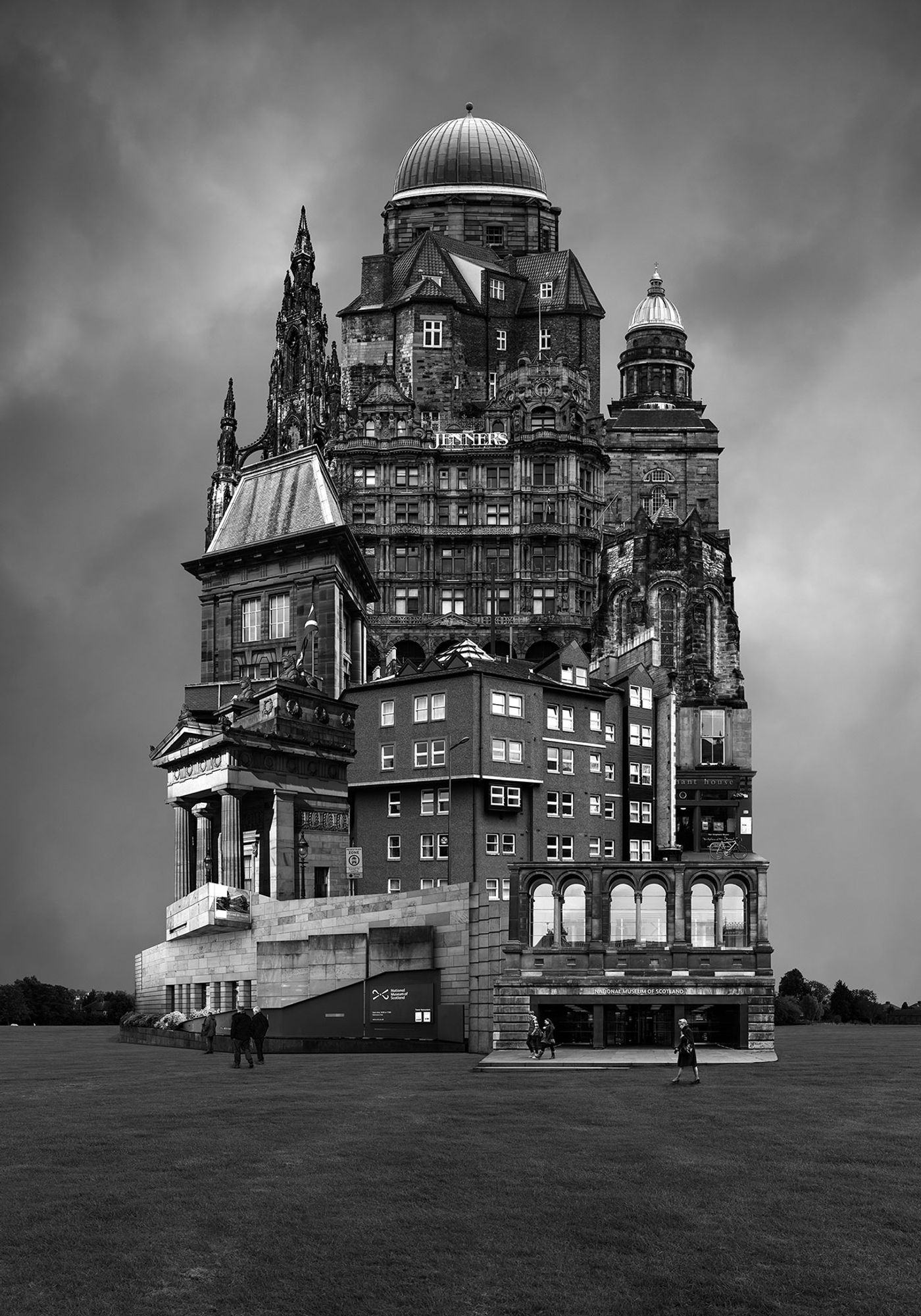
Beomsik Won, Archisculpture 034, 2015. Archival pigment print, 100x70 or 171x120cm.
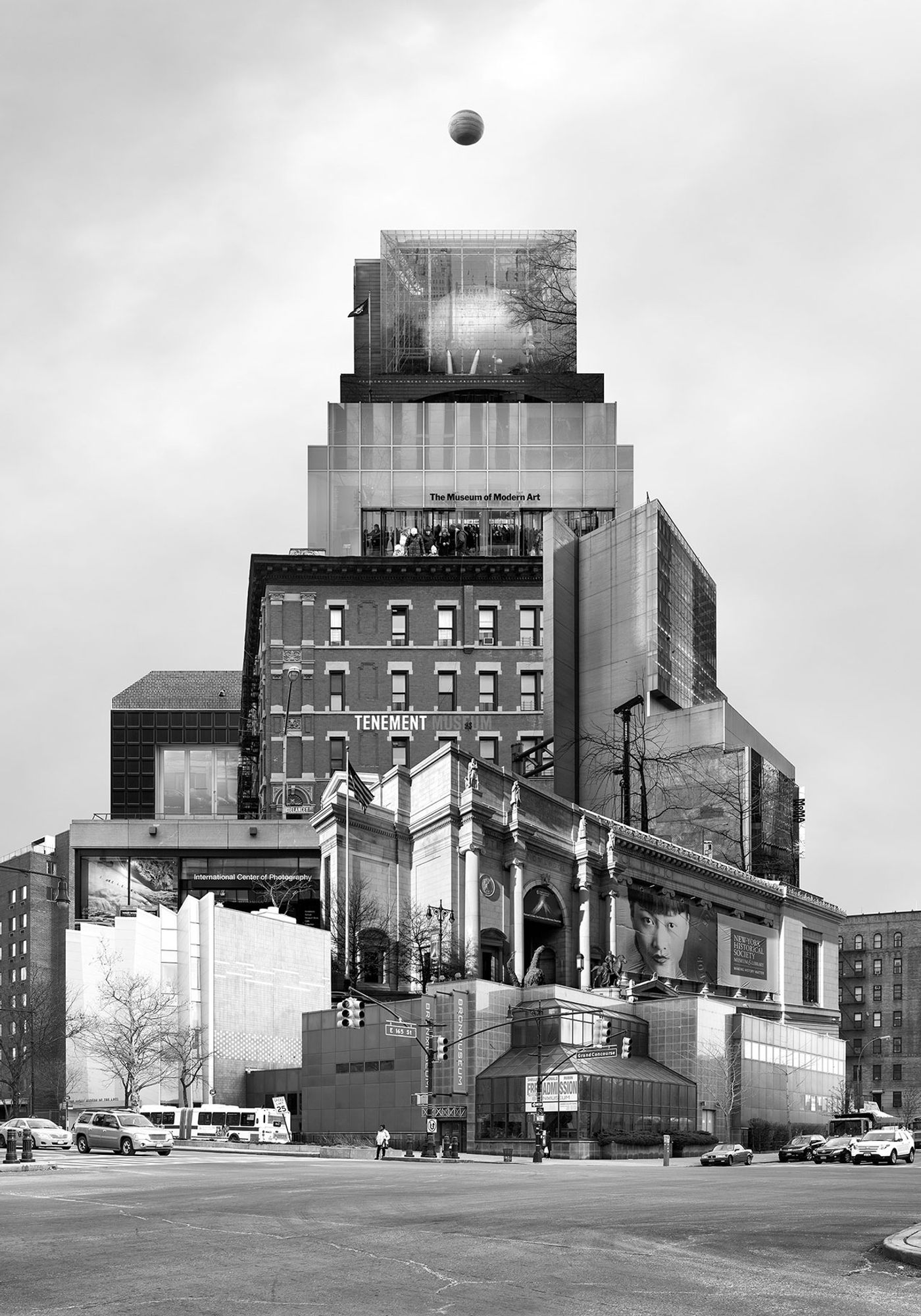
Beomsik Won, Archisculpture 043, 2015. Archival pigment print, 100x70 or 171x120cm.
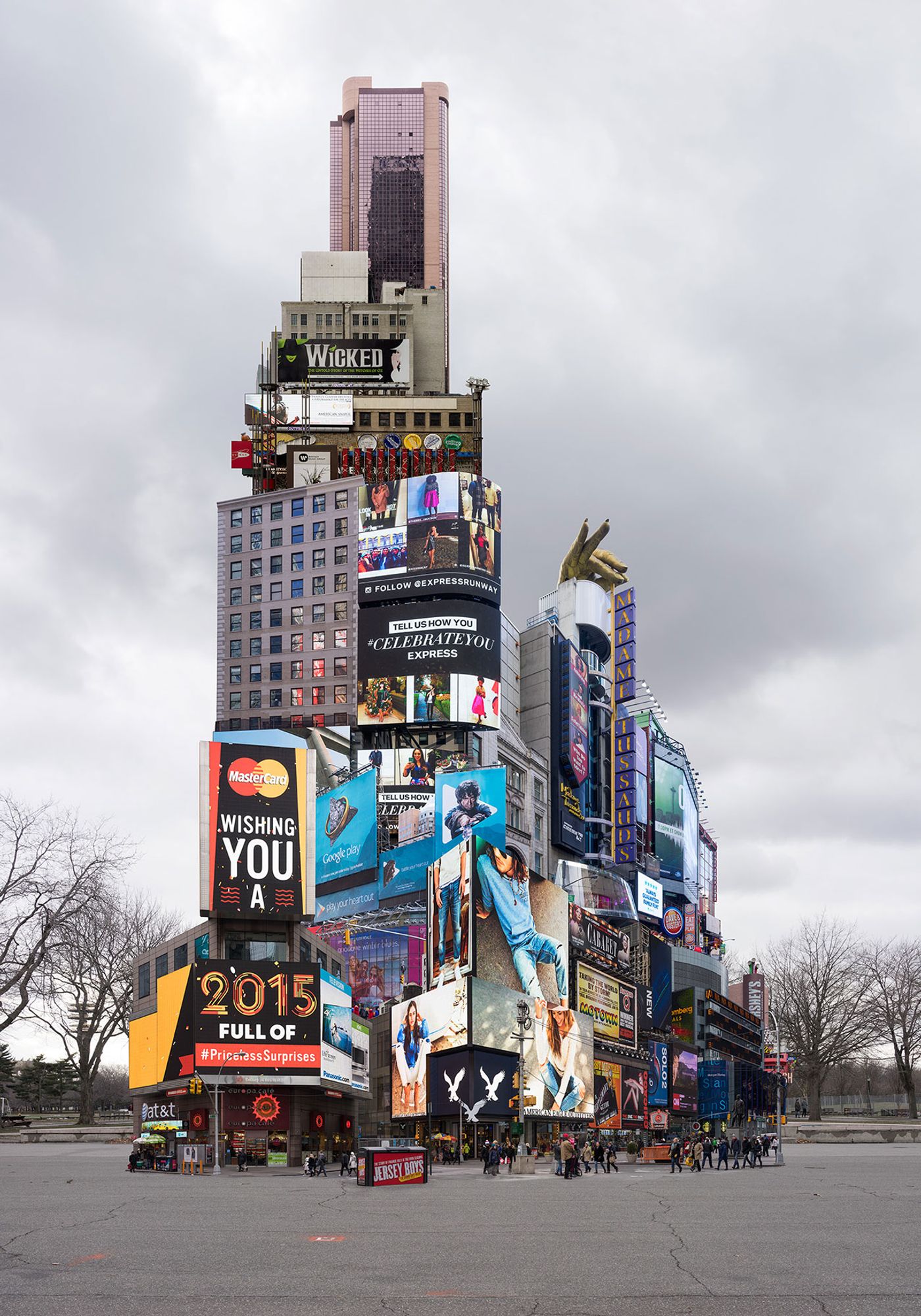
Beomsik Won, Archisculpture 044, 2015. Archival pigment print, 100x70 or 171x120cm.
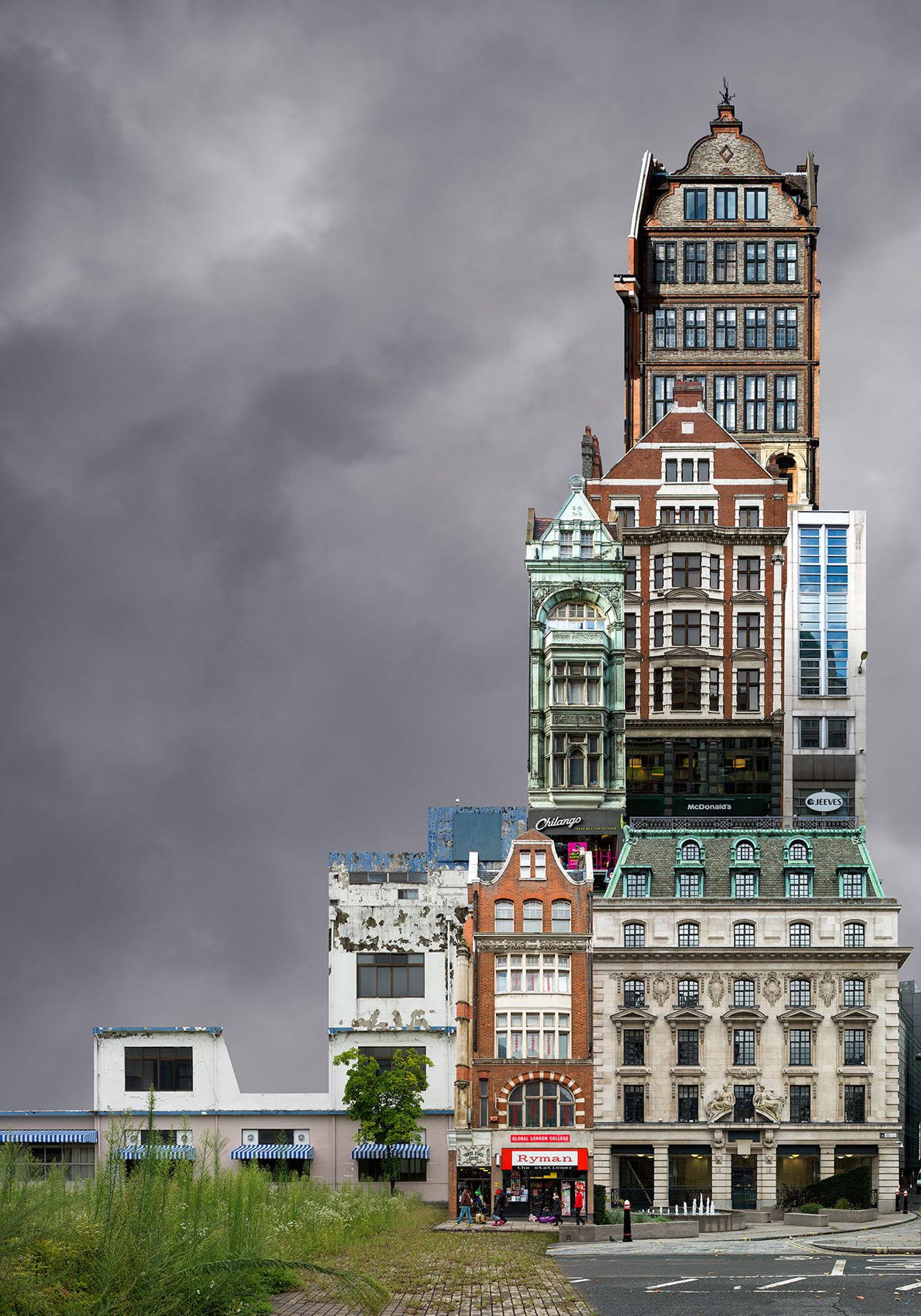
Beomsik Won, Archisculpture 035, 2015. Archival pigment print, 100x70 or 171x120cm.
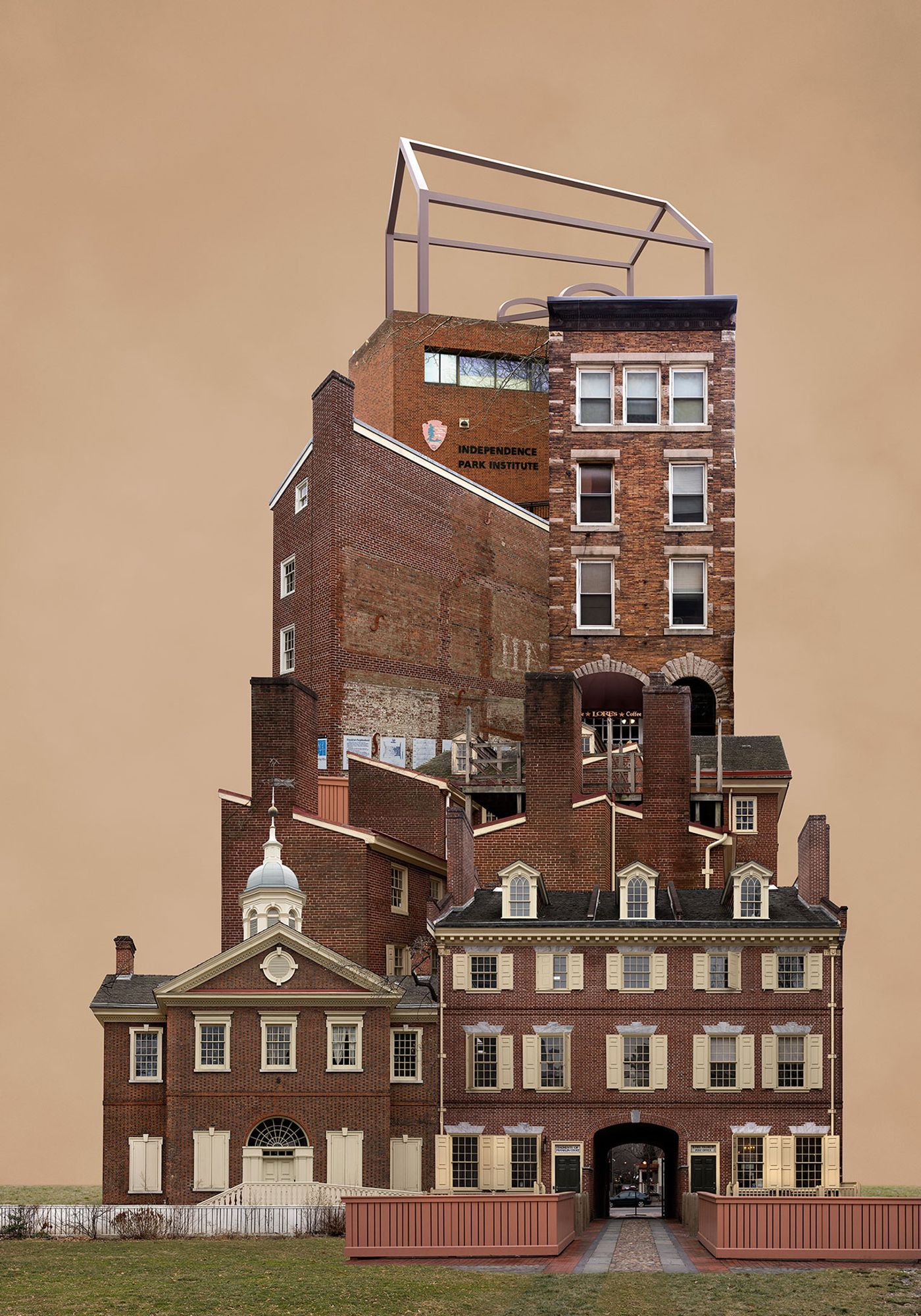
Beomsik Won, Archisculpture 048, 2016. Archival pigment print, 100x70 or 171x120cm.
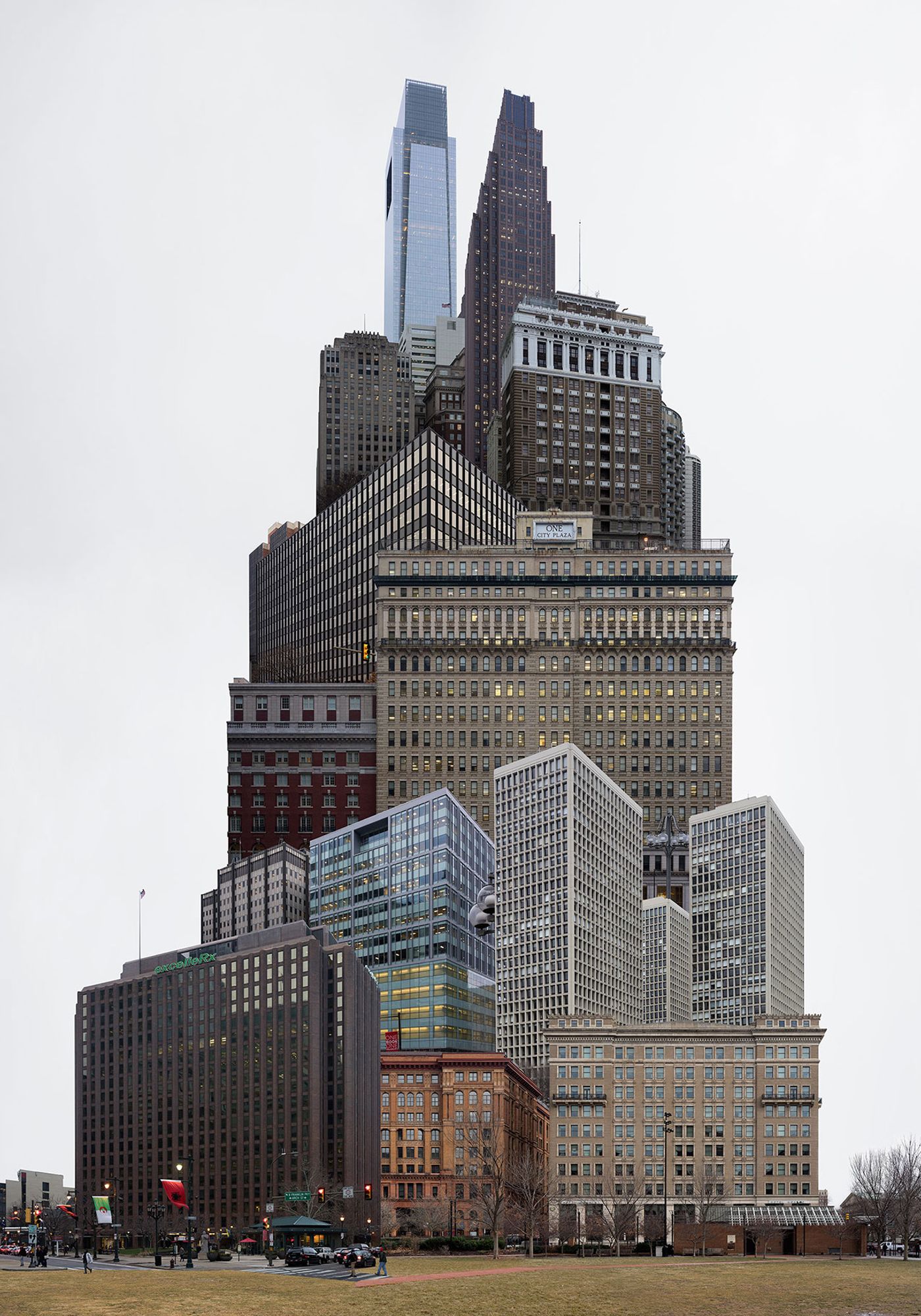
Beomsik Won, Archisculpture 046, 2016. Archival pigment print, 100x70 or 171x120cm.
